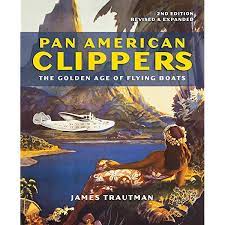
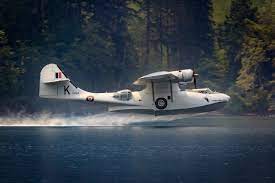

Seaplanes are the airplanes capable of landing and taking off from or on water bodies.
Here are seaplanes which can land and takeoff on land as well as water, these types of sea planes are called amphibious aircrafts. Seaplanes and Amphibious aircrafts are further categorized into floatplanes and flying boats which we will see later in article.
The development of seaplanes took place during World War 2; due to the requirement of airfields in enemy territory, it became hard to operate any land based mission and transporting soldiers.
Hence the idea of using seaplanes to land and takeoff from water bodies like sea, river or lakes came into uses for better access to undeveloped or road less areas. Countries like US, France and other European countries started developing their own experimental seaplanes. The race started to develop them and the first successful one in 1910 by Frenchman Henri Fabre, he made powered seaplanes and also demonstrated the flight. It helped later on other flyers to help them build theirs.
Soon after in next year Fabre collaborating with other aviation pioneer started their small airline based on five seat seaplane. By looking at the success of Seaplanes French Navy didn’t wait to order and take benefits of these new flying oats. Hey ordered the first Fabre based designed seaplane in later part of 1912.
In the race United States no how wanted to lack in such technological advancements so they also developed their own seaplane and the first successful model flow was built by American pioneering aviator Glenn Curtiss in 1911. His idea of seaplane was different and used floats along with the wheels inside. Which help it the capability to land on water and runway both, calling him first amphibian aircraft to do so? Later on in 1912 he experimented seaplane design with Hulls and called the flying boats. After seeing the successful flights United States Navy took delivery of the first models of seaplanes based on Curtiss Model E .
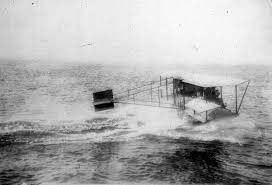

Seaplanes for Commercial Airlines
After seeing the huge success in seaplanes capabilities and operations in 1913, the Daily Mail newspaper put £10,000 prize for whomever which crosses first non-stop crossing flight to Atlantic. Incident like his and further development of seaplanes for airline travel in public domain increased.
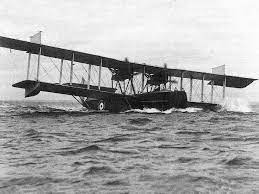

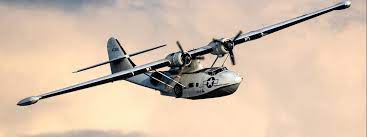

Post WW II
After the World War 2 ended, suddenly the uses of seaplanes decreased. There were multiple reasons which affected the development of Seaplanes like.
1. Development of land based aircraft in terms of more power, Jet engines, More speed and Passenger carrying capacity per airplane outnumbered the capabilities of seaplanes.
2. The Sturdiness of the design required to land and takeoff seaplanes for water was an important factor too, since many times accident due to strong waves breaking the hulls or the impact of hard landing on water surface used to impact the structure of the seaplanes.
3. The induced drag due to the body design and vibrations during landing and takeoff were not comforting, people chosen normal airlines rather than going for seaplanes.
4. It became difficult to compete with big airline companies like BOAC and Boeing which were delivering big airplanes for fast and longer flights.
Despite these issues the popularity of seaplanes in some of the purposes like firefighting, navy operations search and rescue seaplanes etc has been proved to be worthy enough, we cannot ignore that some of the biggest navy’s and air force sill operate seaplanes or floatplanes.
Floatplanes
Floatplanes are specific types of seaplanes which have attached pontoons or floats mounted on the fuselage. The fuselage never comes in contact with the water.
Instead Floats takes all the load when its parked and create enough buoyancy to float the whole aircraft body. The design is neat and simple.
The amphibious version of Floatplanes offers wheel under the floats or outside which help them to land on runways. Some of the examples are de Havilland Otter.
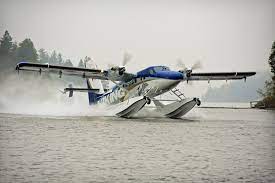

Boat Planes
Boat planes are another design of the seaplanes which is totally different in shape and method of landing takeoff. The fuselage of the boat planes are designed like a hull of a oat and provide enough rigidity and sturdiness to take the impact of landing on not so calm water. They also have small float support on the tip of each side of wing. Which provide support in rolling stability while cruising on water surface?
These were the most popular seaplanes during the WWI and WWII use to the capability to land and take off without any runways. Huge number of floatplanes were developed during this era and once the wear ended they were left useless so navy and operators used them as cargo and supply goods across Atlantic oceans. Designs like PYB Catalina were modified up to large extent so they can collect water from water bodies and drop it on the fire zones to act as water tanker in wildfire.
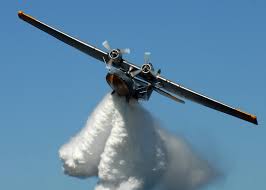

Modern Seaplanes
The Seaplanes are never lost and 20th century brought the new generation of modern seaplanes. Thanks to companies who have dedicate their work to keep the legacy into research and design of these iconic birds. Companies like Setouchi Seaplanes from Japan, Icon A5, Cessna, de Havilland Otter and many more. Recently China launched its own first amphibious aircraft “AG600”. Being the largest of its kind in the operation now, the AG600 possesses a maximum take-off weight of over 53 tons, and an operational range of 4,500 kilometers.
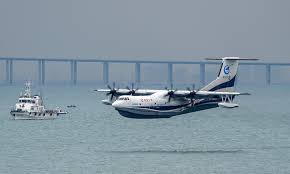

Also apart from these big developments the recent change came into personal aircrafts which possess the capability to make you reach in more than on of the land, water or snow. Icon aircraft’s A5, Seamax M22, Seawind 300C, Lisa Akoya Airplanes are some of the. These seaplanes or amphibious aircrafts have the single or two seat capacities with some of the advance control system. The aviation enthusiastic is the key market and pioneers who want to enjoy the freedom to take their airplanes in any remote part of the world.
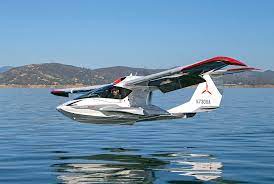

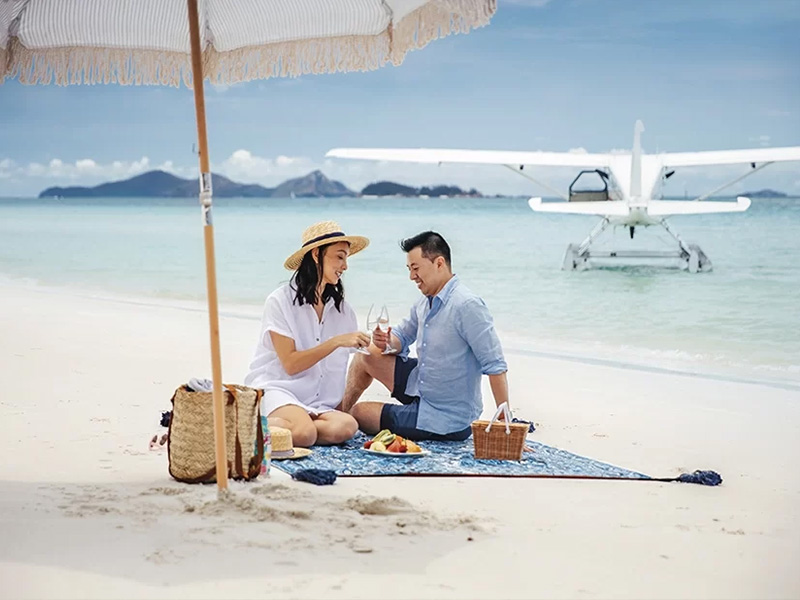

Come and experience the thrill of flying on a seaplane with Horizon Sun Charters in the breathtaking landscapes of Palawan, Philippines. Whether you’re seeking a Seaplane Scenic Flight to take in the awe-inspiring views, Charter Services tailored to your specific needs, Resort Transfers to your island paradise, or an adventure-packed holiday with our hassle-free Adventure Packages, we’ve got it all and more!
Our team is dedicated to making your experience unforgettable, from the moment you contact us. Let us be your adventure partners and help you plan the journey of a lifetime. Soar above pristine waters, lush forests, and stunning coastlines as you create lasting memories with us.
Don’t miss out on this incredible opportunity to fly and Discover Palawan like never before. Contact us now, and let your seaplane adventure begin!


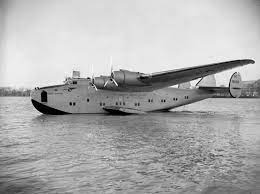

Flying boats or aircraft that took off and landed on the water were the mainstays of international aviation transport for many years – but then one day, they vanished and were no longer popular. Why did aviation switch to land-based aircraft? Let’s explore this forgotten slice of history.
Why flying boats are fantastic
Airports are expensive. Not just in terms of dollars to build, but land needed for long runways too. Airports also need to be as close to the destination city as possible otherwise it defeats the purpose. At some point, a city will need to make a comprise when building an airport (or even go as far as to spend $25 billion making an artificial island).
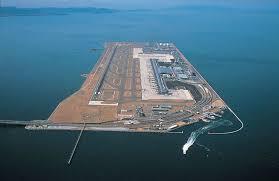

But what if there was another way? A significant number of cities around the world are near waterways, be it rivers or harbors. All that water offers the perfect landing zone for amphibious aircraft.
There are several advantages to this. Water doesn’t require the construction of large runways, and boats can use the space when a plane isn’t landing (you can’t use an airport for anything else). Plus, the runway direction can change depending on the wind.
Several cities benefited greatly from flying boats, such as New York, Wellington, and Sydney.


What happened to flying boats?
Everything changed after World War II. During the war, various militaries spent great expense building many airfields around the world, significantly improving land-based infrastructure. With so many available airports, airlines found that they could now operate long routes (like the Kangaroo route, for example) without having to use seaplanes.
Without a need to land on water, aircraft designs could now steam ahead towards streamlining and improving aerodynamics (flying boats were not very fluid in the air). With the inclusion of jet engines in the 1960s, aircraft manufacturers such as Boeing did away with water based designs and embraced as much speed as possible.
The difference in speed was the final nail in the coffin for passenger flying boats. Without the speed, flying boats could not compete with land-based jet aircraft.
Flying boats still play a role
The flying boat still had a role to play around the world. Several airlines operated the type well into the 1970s as a means to connect destinations that lacked an airport. Today, flying boats (more often just seaplanes) offer flights to remote areas in Alaska and island states, as well being used for fire fighting or in tourism around the world like in the Philippines with Horizon Sun Charters.
Also, the U.S. Air Force prototyped a jet-powered flying boat called the Martin P6M SeaMaster. It could fly at a speed of Mach 0.9 (1,100 Km/h), and as a strategic nuclear launcher, it could easily carry passengers. Had the program gone ahead, likely we would have seen the concept shifted to the passenger market as well – a total game changer for the aviation industry.
Alas, the aircraft competed for funding with aircraft carriers (if it can land anywhere, then it doesn’t need a boat) and, in the end, was canceled.
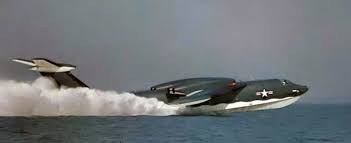

Flying boats played a pivotal role in the development of aviation around the world, bringing aircraft to places that didn’t even have room for an airstrip, let alone an international airport. We will not forget their place in history as we march towards a future of non-stop long-distance flights.
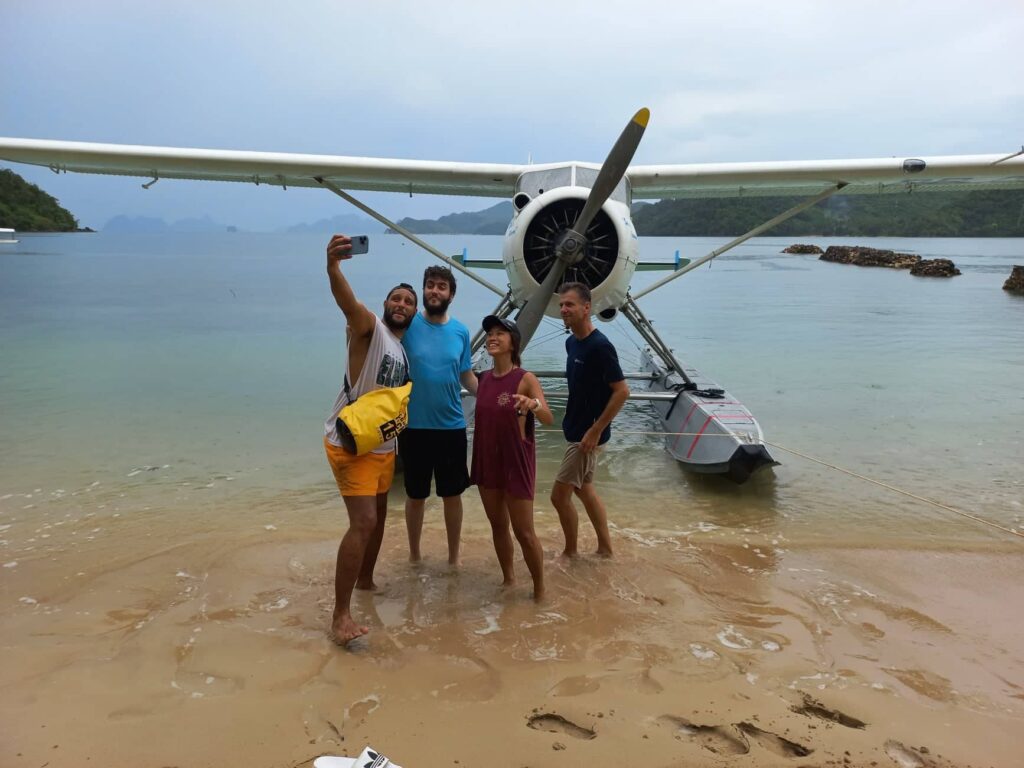

Come and experience the thrill of flying on a seaplane with Horizon Sun Charters in the breathtaking landscapes of Palawan, Philippines. Whether you’re seeking a Seaplane Scenic Flight to take in the awe-inspiring views, Charter Services tailored to your specific needs, Resort Transfers to your island paradise, or an adventure-packed holiday with our hassle-free Adventure Packages, we’ve got it all and more!
Our team is dedicated to making your experience unforgettable, from the moment you contact us. Let us be your adventure partners and help you plan the journey of a lifetime. Soar above pristine waters, lush forests, and stunning coastlines as you create lasting memories with us.
Don’t miss out on this incredible opportunity to fly and Discover Palawan like never before. Contact us now, and let your seaplane adventure begin!
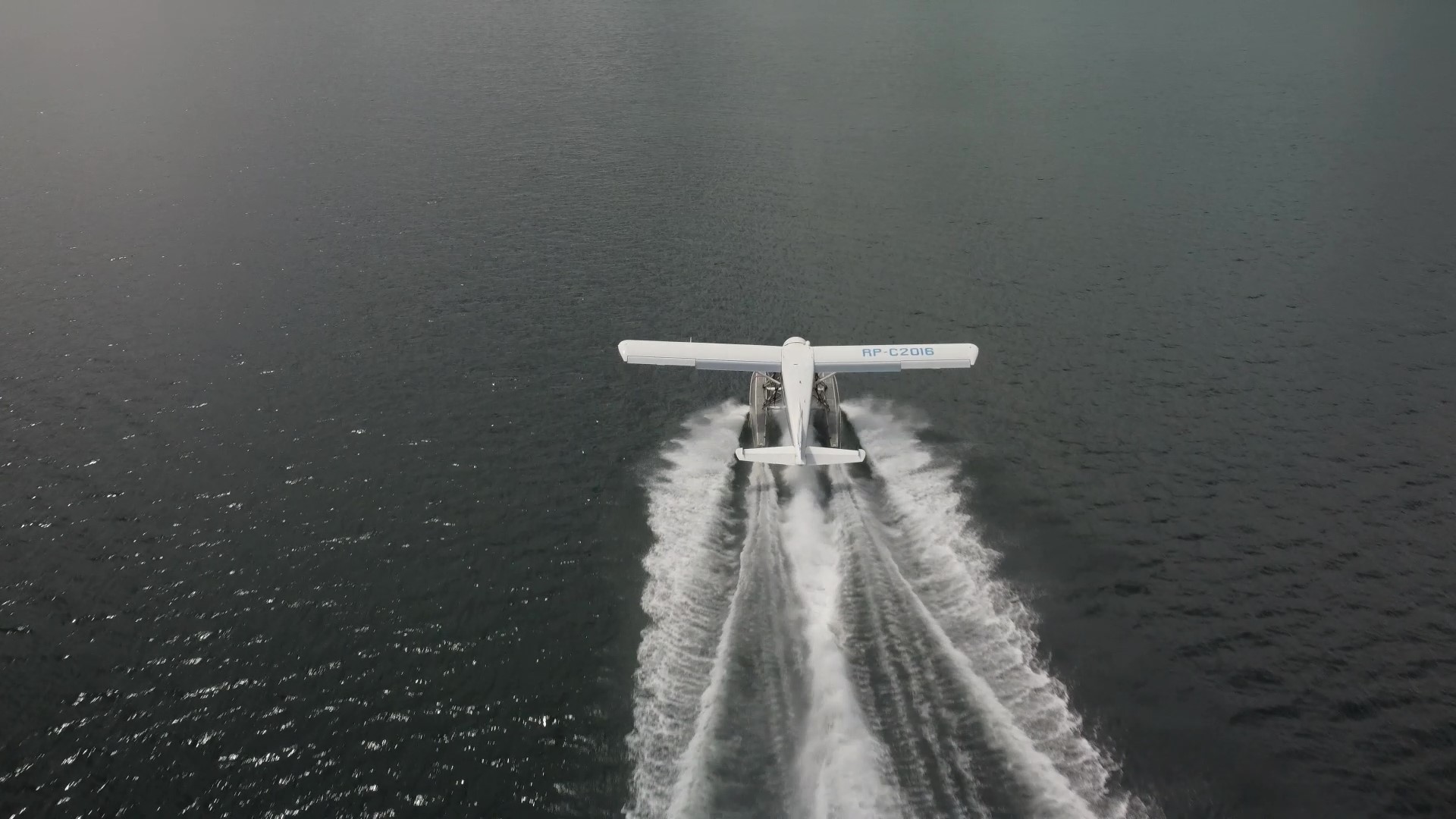

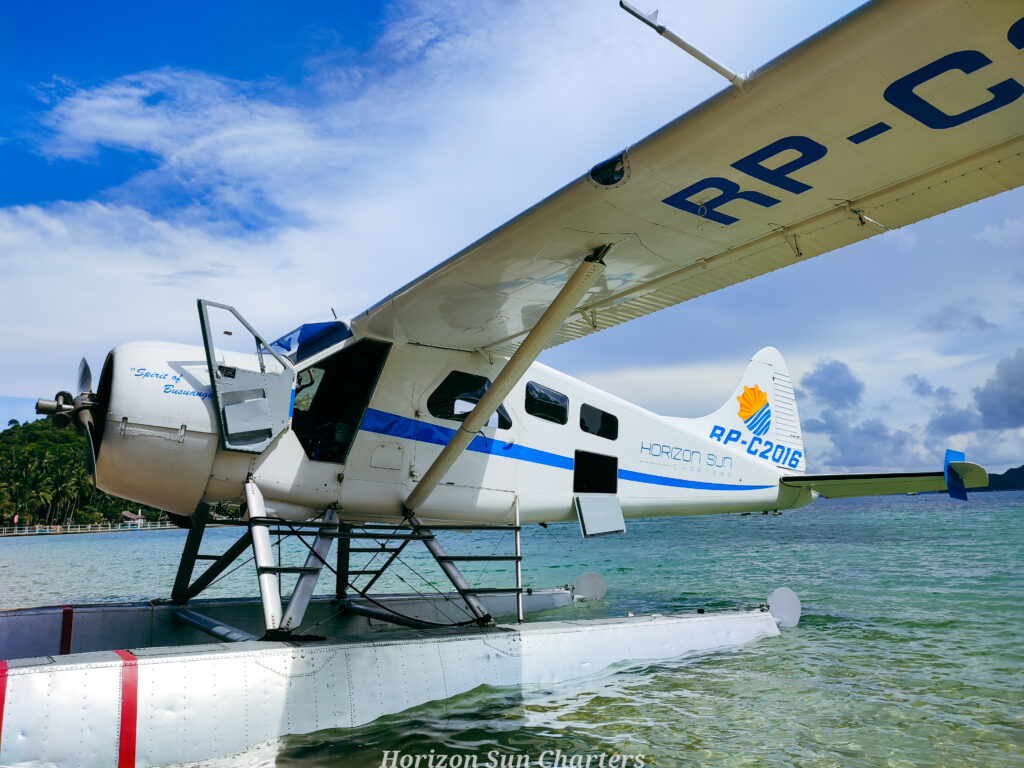

Seaplane or Floatplane?
First, a quick bit of terminology. The terms floatplane and seaplane are often used interchangeably, but there is a difference between them. A floatplane lands on floats or pontoons attached to the aircraft fuselage without the fuselage making contact with the water. A seaplane, or flying boat, lands using its fuselage.
Seaplanes are very different aircraft from floatplanes. They are designed around a single fuselage which offers buoyancy. They may also have floats attached to the wings for stability, but they rely on the fuselage for buoyancy.


Floatplanes are more common today
The flying boat was popular in the early days of aviation. Indeed, before the Second World War, there were few land runways. Landing on the water gave access to many new locations. Airports are expensive to build, and flying boats played a huge role in the development of aviation around the world.
Many airlines operated flying boats, and often on impressive long flights. Pan Am, for example, flew the Sikorsky S-36, S-38, S-40, and S-42, as well as the Martin M-130. These introduced its well-known Clipper names. It also operated nine Boeing 314 flying boats. Qantas (as Qantas Empire Airways) operated the Empire flying boat between Australia and the United Kingdom.


After the war, the use of flying boats declined as more airports were available, and manufacturers turned to larger land-based aircraft. Flying boat use has continued, though, in some areas. Floatplanes have replaced them for the role of water landing, particularly for shorter flights in island or lake locations. Used today by Horizon Sun Charters in the Philippines, a country with over 7,300 Islands!
Adapting commercial models
Many floatplanes in use these days are adapted land-based aircraft, although some are specifically built as floatplanes. Several manufacturers offer models with floats fitted instead of a traditional undercarriage and certified with an additional airworthiness type certificate.
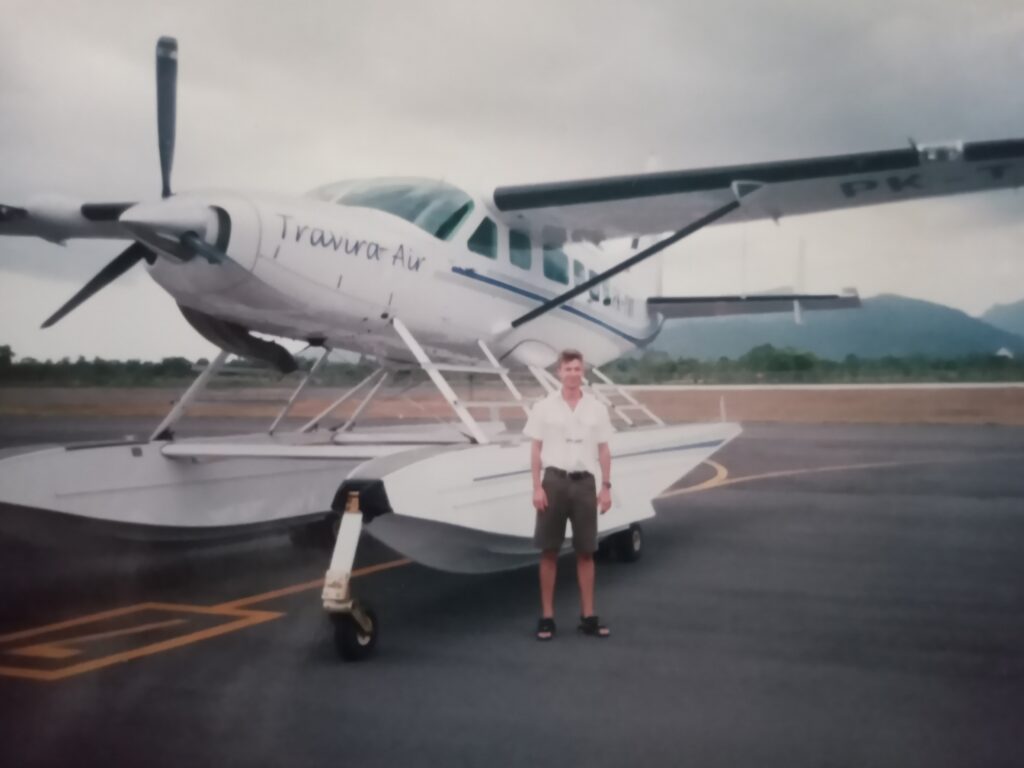

Some aircraft will maintain a standard undercarriage, allowing amphibious use on land as well. This will aid extra weight and complexity, however.
Apart from replacing the undercarriage., few other modifications need to be made to the aircraft. Unlike a seaplane, the fuselage is not designed to come into contact with the water, so no special modification or sealing is required.
Likewise, flight controls remain the same, although the aircraft will handle differently in the air and when landing. Pilots need to train to be aware of this. The extra drag and weight of the added pontoons will make aircraft less maneuverable, and the rate of climb is reduced.
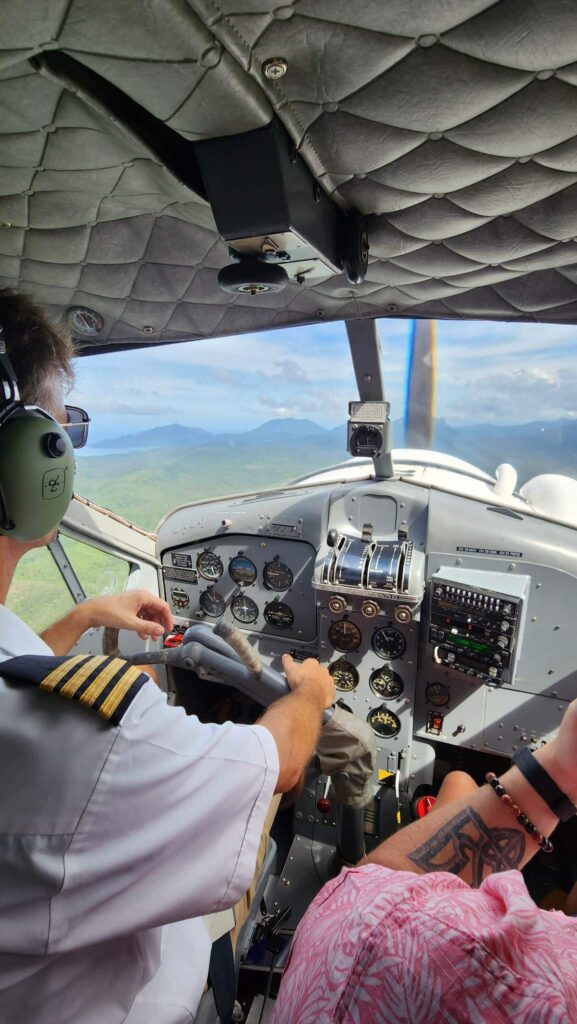

As long as pilots stay aware of the changed handling conditions, flying and landing a flying boat is similar to a standard aircraft. The approach path and speed would be similar, flaring as usual before touching down on the water. The increased drag, though, will slow the aircraft much faster. Most floatplanes will have some sort of a rudder to aid control in the water.
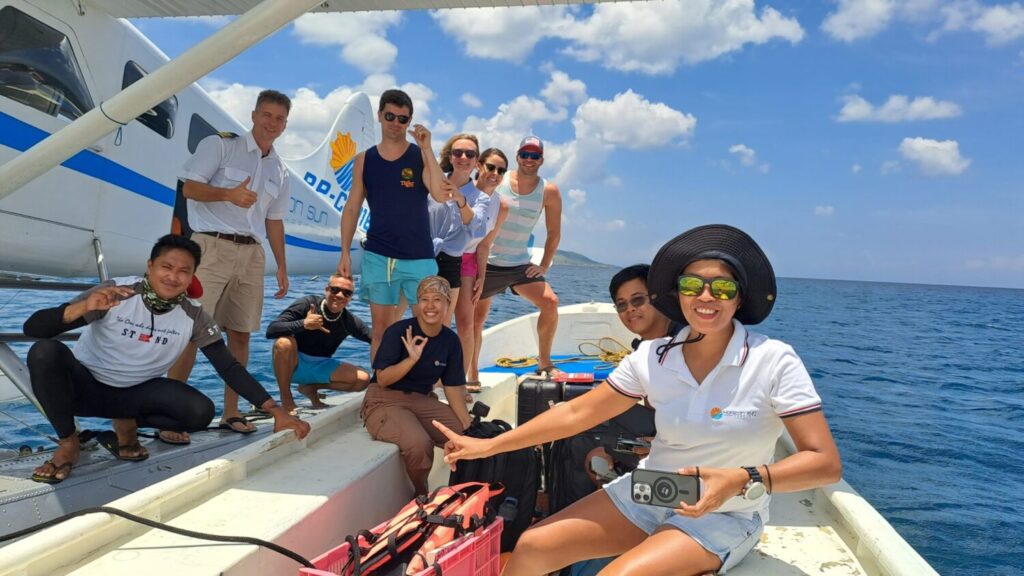

Come and experience the thrill of flying on a seaplane with Horizon Sun Charters in the breathtaking landscapes of Palawan, Philippines. Whether you’re seeking a Seaplane Scenic Flight to take in the awe-inspiring views, Charter Services tailored to your specific needs, Resort Transfers to your island paradise, or an adventure-packed holiday with our hassle-free Adventure Packages, we’ve got it all and more!
Our team is dedicated to making your experience unforgettable, from the moment you contact us. Let us be your adventure partners and help you plan the journey of a lifetime. Soar above pristine waters, lush forests, and stunning coastlines as you create lasting memories with us.
Don’t miss out on this incredible opportunity to fly and Discover Palawan like never before. Contact us now, and let your seaplane adventure begin!
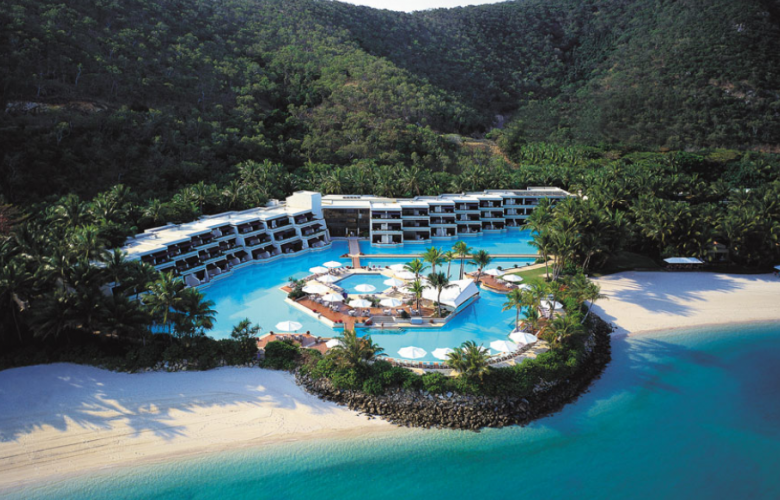

Seaplane Charter to Island resorts transfer is the epitome of luxury travel, and staying at destination at a fabulous 5-star hotel that is set on its very own private island. The following ten elite resorts, all of them located on private tropical islands, rank among the most exclusive hotel properties worldwide, offering absolute discretion, unique experiences, and word-class service (with price tags that match their reputations).


10. INTERCONTINENTAL HAYMAN ISLAND, GREAT BARRIER REEF, AUSTRALIA
Hayman Island is a private island resort in the heart of the Whitsundays, managed by the InterContinental Hotel Group. The nearest island to the Great Barrier Reef, Hayman Island is ideal for nature based activities and exceptional guest experiences. Featuring 160 guest rooms, suites, villas and penthouses across three main accommodation wings, the property presents guests the ultimate in barefoot luxury. Restaurants and bars offer an array of local and international cuisines, while the spa is a heaven for the body and soul. The resort’s on-island experiences range from nature-bound walking trails, immersive wildlife tours, fish feeding, cultural weaving classes and a curated collection of sports and fitness activities including yoga, tennis lessons, state-of-the-art golf simulator and more.
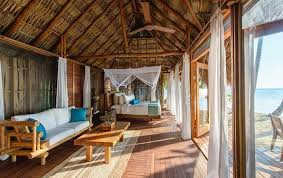

9. CALALA ISLAND, NICARAGUA
Tucked away in a little-known corner of the Caribbean (off the coast of Nicaragua), Calala Island is a hidden gem featuring just four suites on the entire island, accommodating a maximum of eight guests (suites can be rented individually or the entire Island booked exclusively). A dedicated team of 30 staff for a 4:1 staff to guest ratio caters for guests’ every desire. Dining is a moveable feast: on your terrace, in the restaurant, at the pool bar or on the beach. Expect Michelin-inspired tasting menus in the evening and casual classics at lunch. The island is a nesting site for the critically endangered Hawksbill turtles so expect to see them laying, hatching and meandering to the sea during the various seasons.
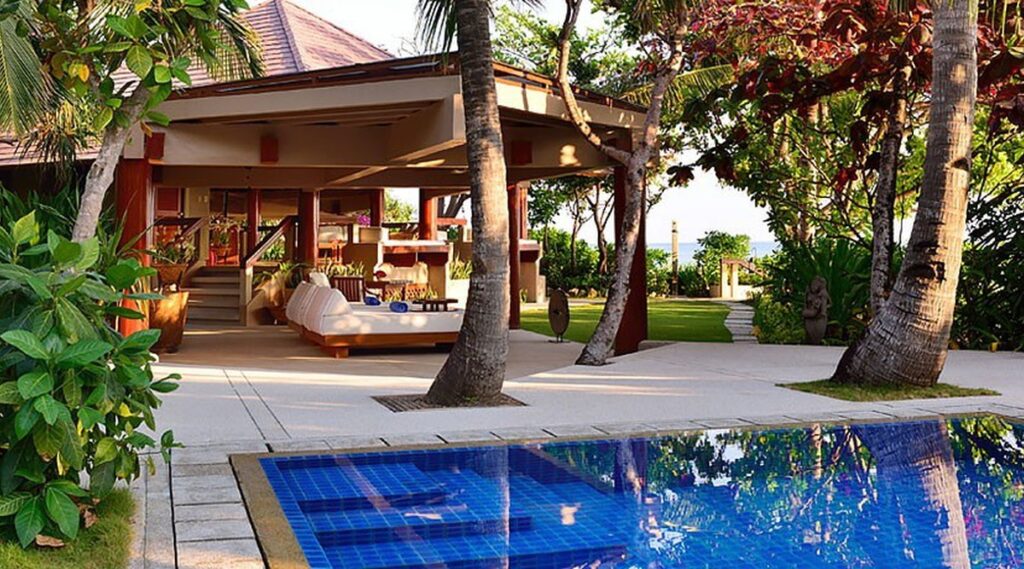

8. AMANPULO, PHILIPPINES
Accessible only by private plane charter, tropical Pamalican Island is around an hour from Manila, yet feels a world away from anywhere. Managed by the famous Aman group – one of the most luxurious hotel brands in the world – since December 1993, Amanpulo is the only property on this Philippine island. Its 40 airy casitas and villas open to 5.5 km (3,5 miles) of coral sand that encircle a jungled center. With a convivial poolside clubhouse, an Aman spa, dive center and a laidback beach club, guests can be as active as they choose; a snorkel on your private beachfront might be all the exertion required to complete a day of restorative lounging. Other diversions include tennis courts, island hikes, turtle spotting and exploring the kaleidoscopic reefs just offshore.
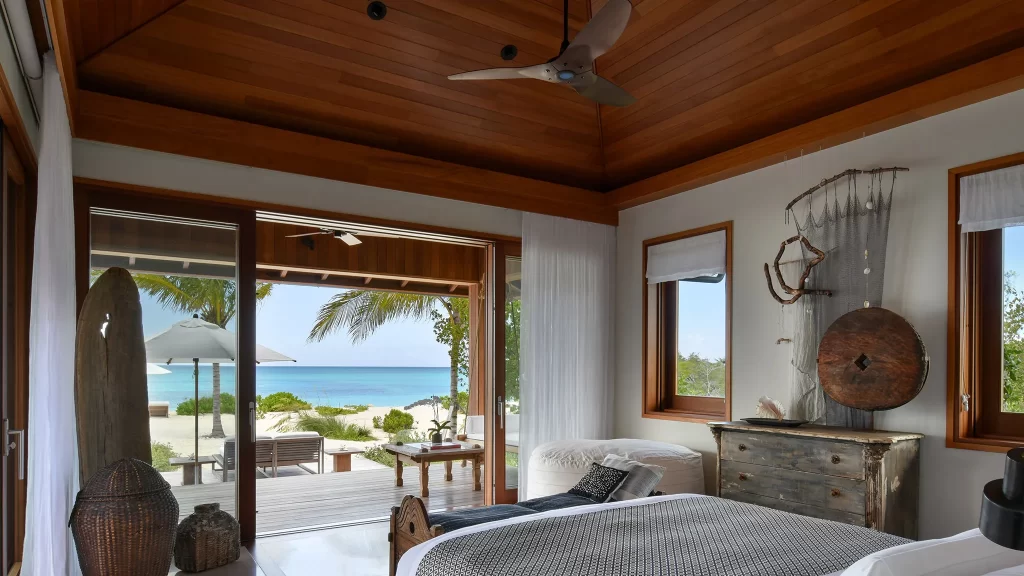

7. COMO PARROT CAY, TURKS & CAICOS
COMO Parrot Cay, a favorite among celebrities, is the northern Caribbean’s preeminent destination private island, wrapped in sweeps of sand and peaceful seas in the Turks and Caicos. It combines 1,000 unspoiled acres and a 1.5 km (1 mi) long, powder-sand beach with relaxed luxury. The region’s best spa, the award-winning COMO Shambhala Retreat, provides holistic, Asian-inspired therapies. Guests can choose from 72 unique guest rooms, suites, villas, and beach side houses, all decorated with understated elegance. For absolute privacy, reserve a residence tucked away from the main resort. The island’s two restaurants serve gourmet dishes, including organic, healthful COMO Shambhala cuisine.
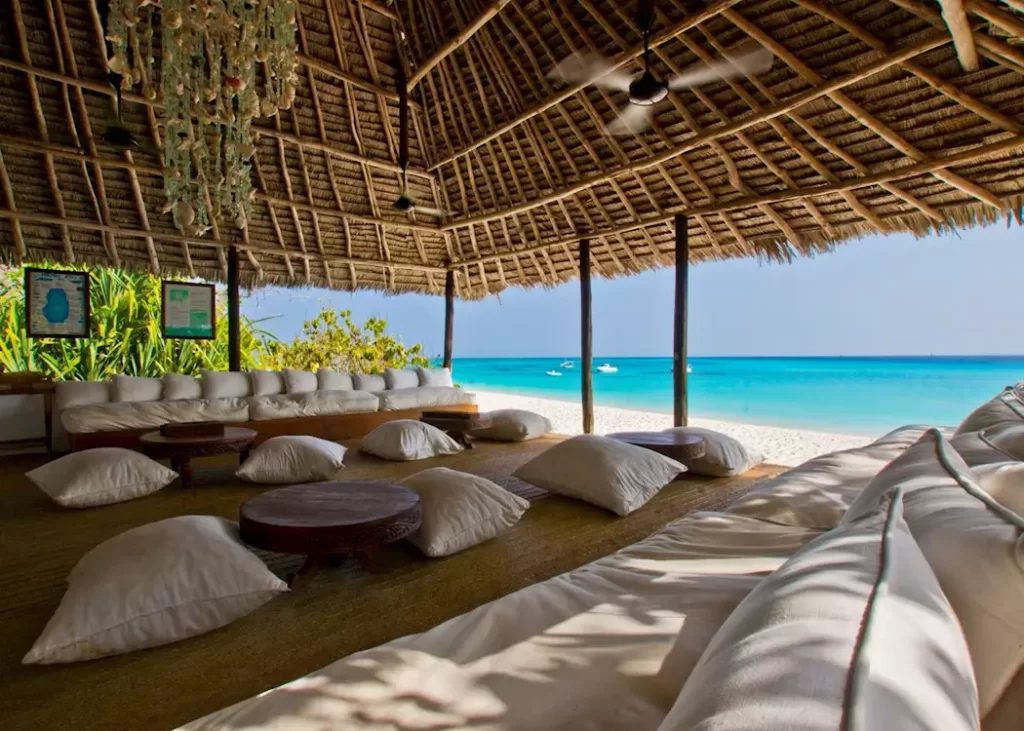

6. &BEYOND MNEMBA ISLAND, TANZANIA
If you’ve ever fantasized about being the sole inhabitant of a breathtaking tropical destination, without the hassle of lifting a finger to take care of yourself, then look no further than &Beyond Mnemba Island. This romantic and secluded retreat, located just off the northeastern coast of Zanzibar, invites a maximum of 24 guests at a time to relax and rejuvenate in an idyllic setting.
Unwind amidst the exclusivity of your own private stretch of pristine beachfront, where 12 beachside bandas peek out from the dappled shade of the casuarina pine forest, overlooking the mesmerizing Mnemba atoll—a true paradise for scuba divers. Whether you choose to snorkel in crystal-clear waters, swim in the turquoise sea, embark on a kayaking adventure, or simply enjoy a blissful beachside massage, &Beyond Mnemba Island offers an array of experiences to suit every preference.
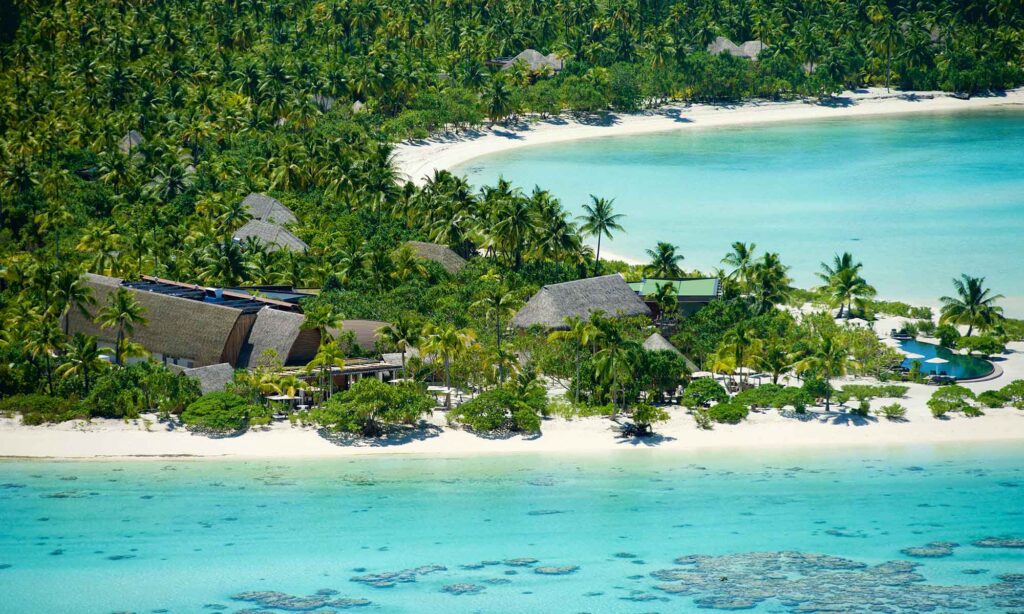

5. THE BRANDO, FRENCH POLYNESIA
The Brando is a unique luxury resort on French Polynesia’s breathtakingly beautiful private island of Tetiaroa – an atoll composed of a dozen small islands surrounding a sparkling lagoon 30 miles (50 km) northeast of Tahiti. The Brando offers carefree luxury in the midst of pristine nature and is only accessible by a 20-minute private plane flight from Tahiti. The resort’s 35 villas sit on white-sand beaches frequented by sea turtles, manta rays and exotic birds. This Polynesian style resort also offers two restaurants showcasing Polynesian-inspired dishes, East/West fusion and classic French cuisine, as well as a luxurious spa and wellness center. It was in this natural wonderland that the legendary actor Marlon Brando settled down, and finally found his home.
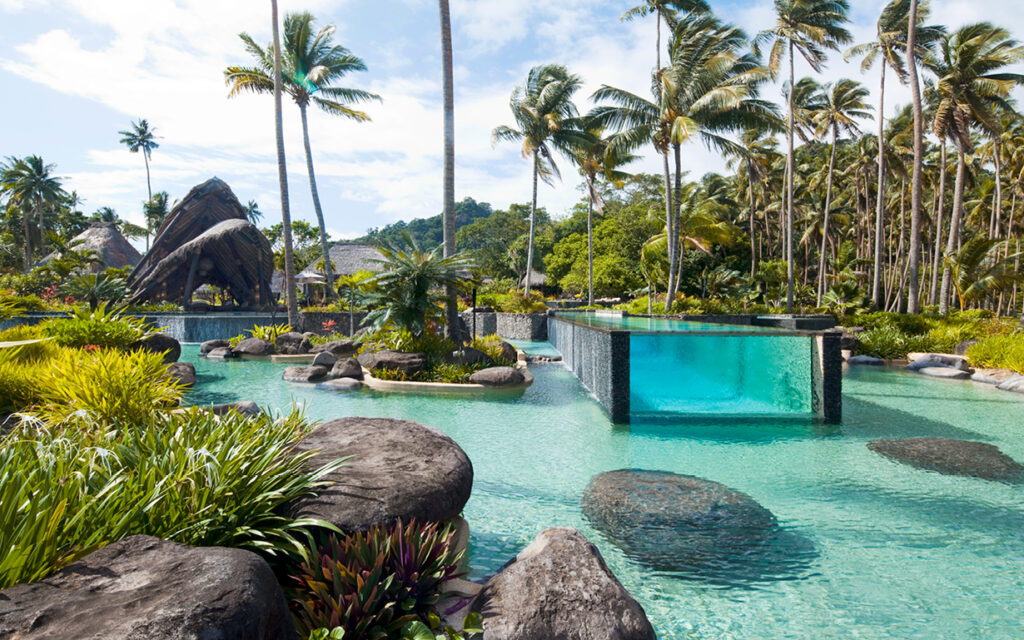

4. COMO LAUCALA ISLAND, FIJI
Set upon 3,500 exclusive acres COMO Laucala Island Resort is set amidst coconut plantations, sandy beaches, rich green mountains and breathtaking natural beauty. True luxury is appreciated in the privacy of the resort’s 25 Fijian-styled villas widely spread on the northern tip of the island. Seamless transition from indoor to outdoor living creates an inspiringly relaxed yet luxurious atmosphere. Featuring an iridescent kaleidoscope of activities – scuba diving, sailing, fishing, tennis, cycling, golf, yoga, culture nights, tours, and water sports – the resort’s integral philosophy incorporates the island’s resources into guest experiences, with products and ingredients raised and grown on the island for use in the spa and across the five gourmet restaurants and bars.
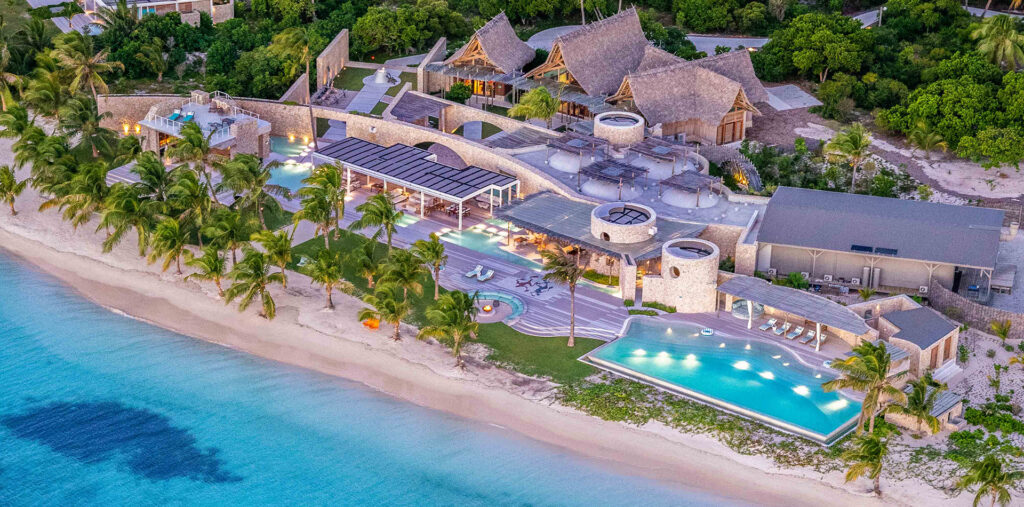

3. TIME + TIDE MIAVANA, MADAGASCAR
Located on an idyllic island off the coast of Madagascar in the Indian Ocean, Time + Tide Miavana is very possibly the most remote luxury castaway in the world. Fringed by an exceptionally beautiful white sand beach and a sprawling coral reef, the resort represents an insanely beautiful haven where guests can enjoy unique bespoke experiences in ultimate privacy. Dotted along the pristine beach, the resort’s 14 massive pool villas are a masterpiece in luxury and design. Guests step directly onto the powder-soft sand from their private decks to enjoy spectacular panoramic Indian Ocean sunsets extending to the far contours of mainland Madagascar. Private Charter are provided to the mainland, where the resort’s guides can lead you to a world of lemurs and chameleons, and a mosaic of unexplored coves.
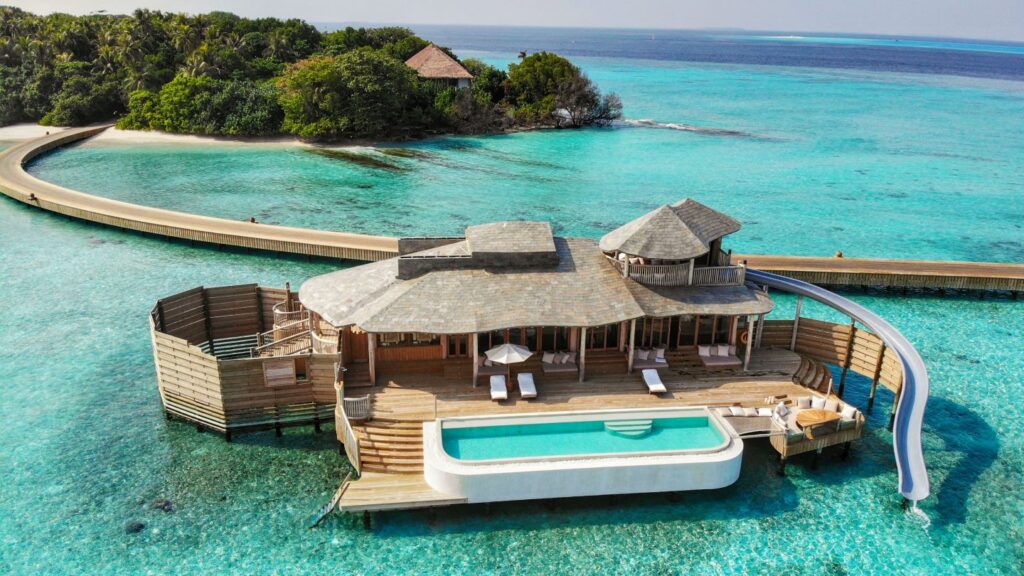

2. SONEVA FUSHI, MALDIVES
Arrive by seaplane charter to Soneva Fushi, the first ‘Robinson Crusoe’ style hideaway in the Maldives, is set on the privately owned tropical island of Kunfunadhoo in Baa Atoll, a UNESCO World Biosphere Reserve. The island – which is 1,400 m (4,600 ft) long and 400 m (1300 ft) wide – ranks among the largest islands in the Maldives. Apart from the crystal clear waters, white beaches and tropical climate, the island’s unusually rich vegetation offers a unique natural experience. Massive, multi-bedroom, fairytale-like luxury villas and private residences are hidden among dense tropical foliage. In keeping with the castaway theme, many are built to resemble tree houses. All open to their own private stretch of sugar white sands, and most boast their own private seawater swimming pools. In summer 2020, Soneva Fushi also unveiled eight fabulous water retreats, which are the largest and most luxurious overwater villas in the world.
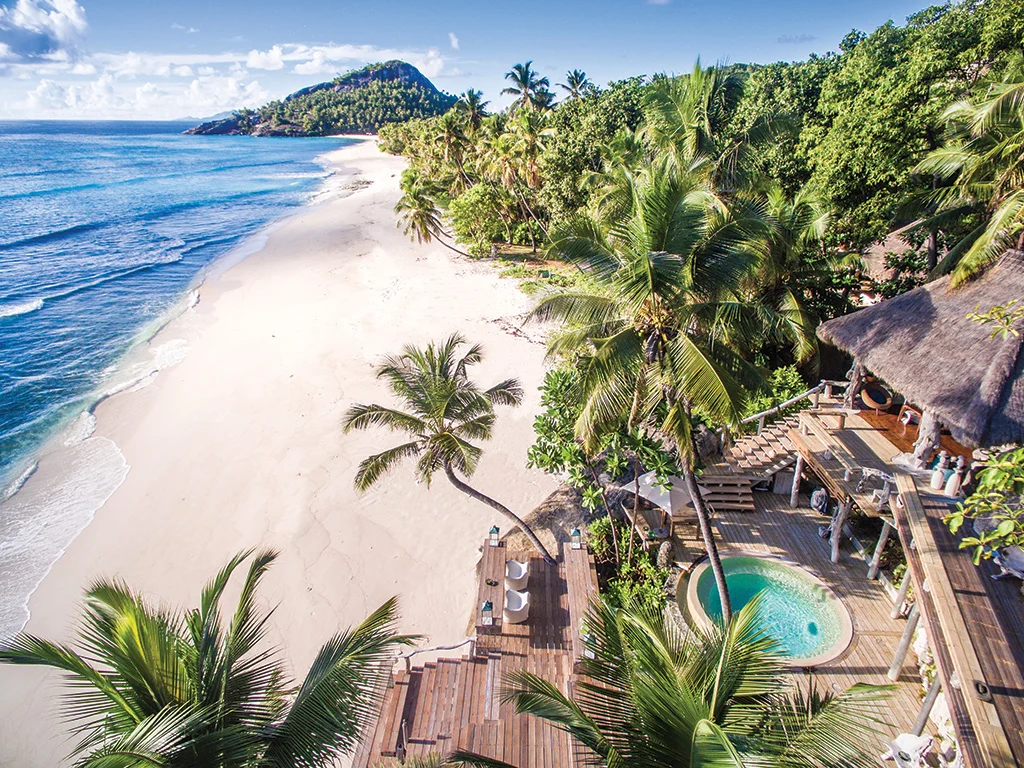

1. NORTH ISLAND, SEYCHELLES
North Island is the world’s most exclusive private island resort and one the best hotels I’ve ever been to. The insanely beautiful island has only 11 opulent hand-crafted villas overlooking the pristine, powder-white sands and turquoise waters of the Ile Du Nord eco-reserve. Raised off the ground to catch the cooling Indian Ocean breezes, all villas open up onto your private garden and the beach. Plunge pools and outdoor showers provide the finishing touches to your private sanctuary. The island’s lounge and dining areas, scenically located health spa and gym, library and dive center, and a rim-flow swimming pool are all built into a granitic outcrop. The resort was the decor for the honeymoon of Prince William and the Princess of Wales in 2011.
Embark on a Luxurious Palawan Escape with Horizon Sun Charter Seaplane Service
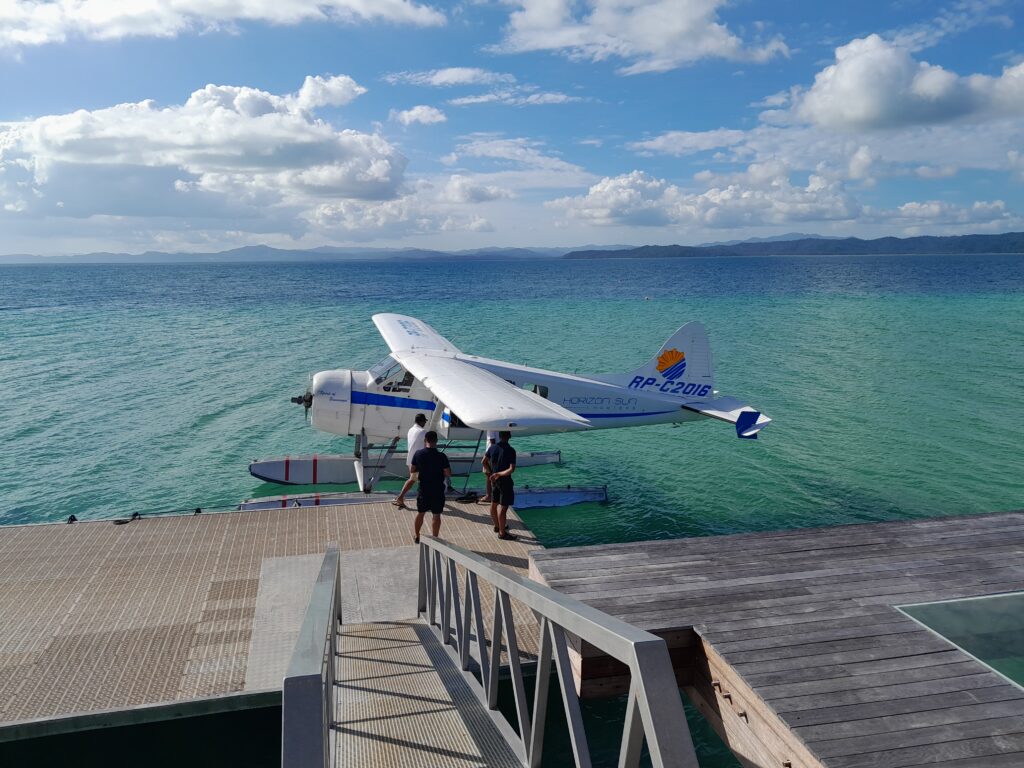

With Horizon Sun Charter, you can explore Palawan’s hidden gems and indulge in the ultimate high-end resort experience. Imagine stepping off the seaplane onto a private island resort, where luxury and serenity blend harmoniously. Delight in lavish accommodations, impeccable service, and breathtaking views that stretch as far as the eye can see.
From pristine white sand beaches to vibrant coral reefs teeming with marine life, Palawan offers a wealth of natural wonders to discover. Experience a thrilling scenic flight, embark on exhilarating island-hopping adventures, or simply bask in the tranquility of your own private oasis by a private seaplane charter. Palawan is a haven for those seeking an exclusive and unforgettable escape.
To embark on a luxury experience like no other, contact Horizon Sun Charter Seaplane Service today. Our dedicated team will ensure your journey is seamless, allowing you to relax and embrace the beauty of Palawan from the moment you step on board our seaplane. Get ready to create lifelong memories in this tropical paradise, where luxury meets natural splendor.
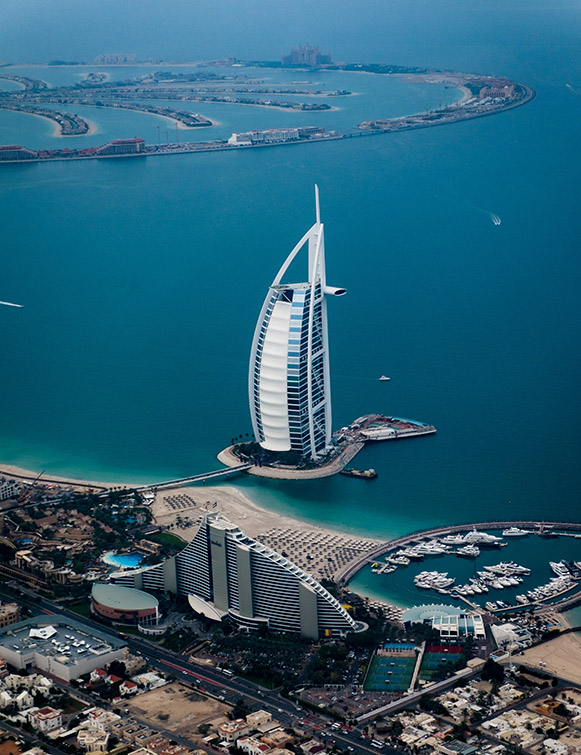

Enjoy an unforgettable accommodation experience in the world’s most luxurious hotels
Vacationers travel to take a break from the everyday hustle and bustle and to experience new cultures. Want to do it in style? Then spending those travel nights in a luxurious hotel will be a perfect way to relax and create new memories. Every tourist should get a chance to experience the luxury that comes with some of the world’s greatest hotels and resorts. While people associate these places with wealth and only see them as playgrounds for the rich, anyone can save some money and enjoy an unforgettable stay at least once in their lifetime. Here are 10 of the most luxurious destination hotels in the world.


1. Burj Al Arab, Dubai, UAE – The Epitome of Luxury in the Middle East
Often described as the first “seven-star hotel,” Burj Al Arab is definitely the most luxurious hotel in the world. Opened in 1999, this hotel is located in Palm Jumeirah, an artificial island in Dubai. While the hotel itself doesn’t describe as the most luxurious hotel, one can definitely see why previous visitors do. It is an all-suite resort with some of the most fantastic amenities that come with incredible services from hotel staff. It boasts six high-end restaurants serving delicious eats, free shuttle rides to & from the airport, and an incredibly unique architecture that one can enjoy marveling at. One may have to spend about $10,000 per room in Dubai’s iconic luxury Burj Al Arab.
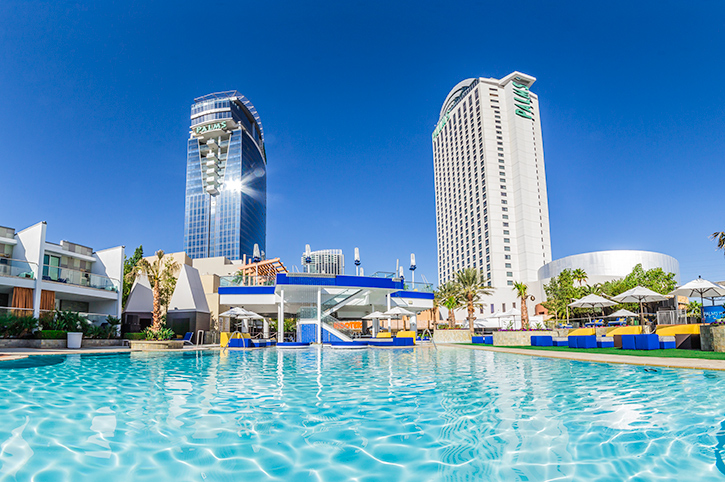

2. Palms Casino Resort, Las Vegas, USA – Extravagance in the Entertainment Capital
The Strip in Sin City is home to plenty of lavish hotels, but Palms Casino Resort is one of out of this world’s luxury hotels to book in Vegas. Its penthouse suites host some of the most vibrant parties in the city, and there are themed suites and villas that vacationers can choose from. Covering a space of 8,500 square feet, this place has fantastic amenities, including a fitness center, a game area, a 17-seat bar, and a private pool. The Palm is one of the most entertaining and luxurious resorts in the world and is worth staying at, at least once in a lifetime.
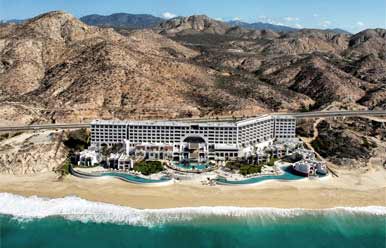

3. Marquis Los Cabos, Los Cabos, Mexico – All-Inclusive Luxury with a Mexican Flair
Marquis Los Cabos is an award-winning all-inclusive resort & spa boasting a unique design and a fascinating Mexica décor, including some of the most impressive artwork from local talents. The resort features five à la carte restaurants serving a variety of cuisines, making this one of the best spots to explore the incredible Mexican culinary scene. One can decide to get some world-class treatment at the hotel’s spa, take a refreshing dip in one of the two beautiful beachfront pools, and play tennis.
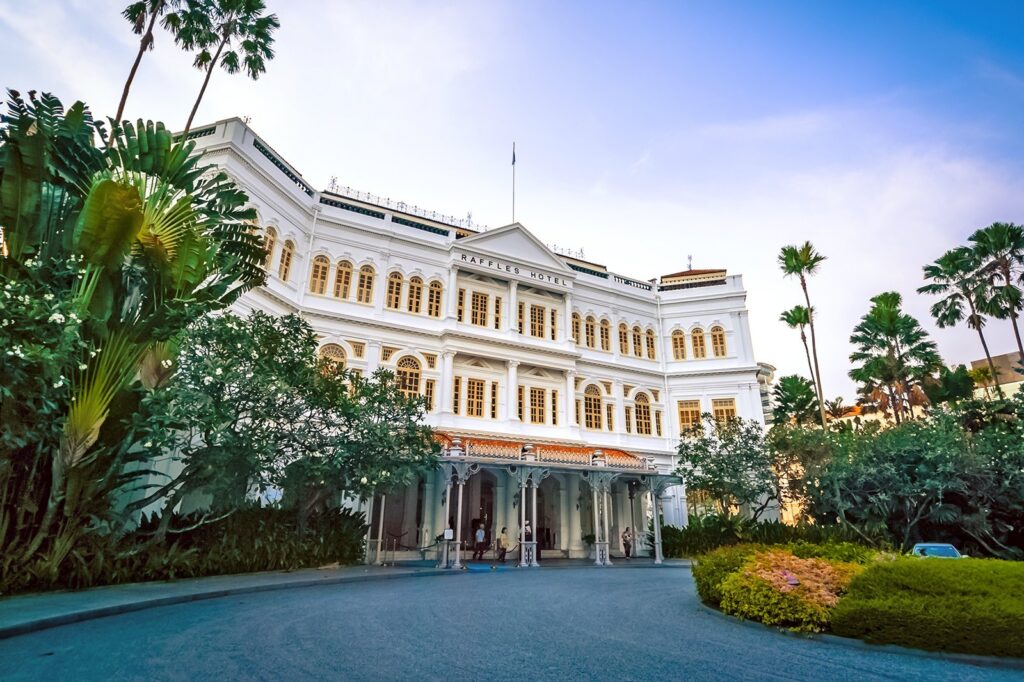

4. Raffles Singapore, Singapore – A Fusion of History and Luxury
Raffles Singapore has been in business since 1887, and even after all these years, it is still an incredible stay and welcomes tourists to be a part of their extensive restoration, which was designed to retain its ambiance, outstanding services, and fascinating history. Experience luxury at its best with newly opened restaurants and bars while enjoying the incredible courtyards. There are other incredible things to explore, including the fantastic architecture, the courtyards, and the boutiques. Raffles guarantees an unforgettable staycation in Singapore as it’s among the best luxe hotel money can buy.
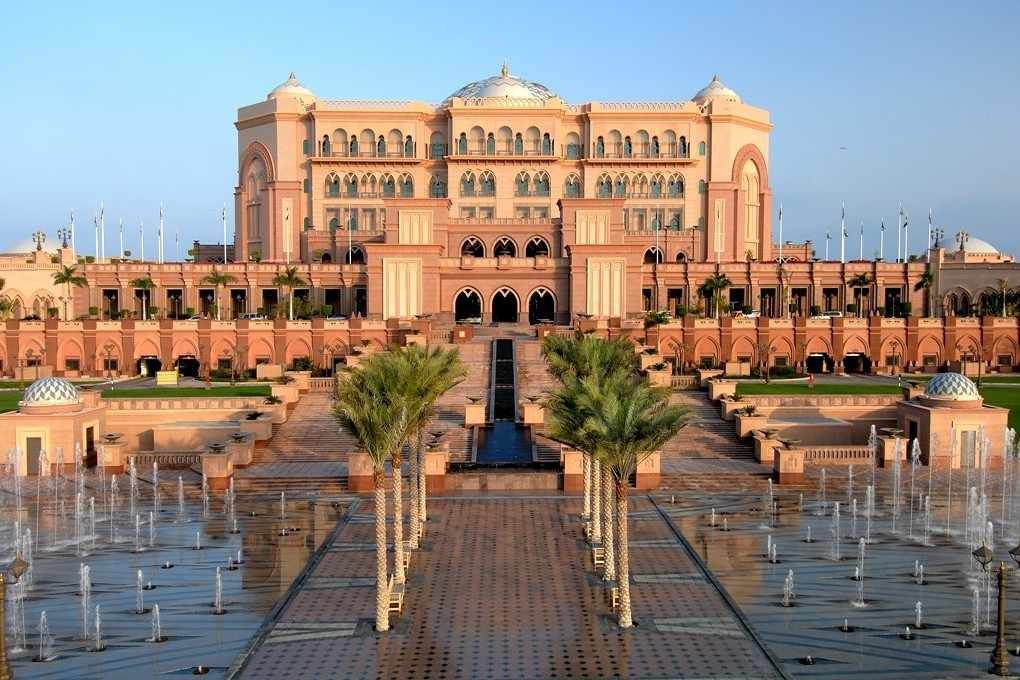

5. Emirates Palace, Abu Dhabi, UAE – Arabian Hospitality at Its Finest
Emirates Palace took about $3 billion to construct, and it has 394 grand rooms and suites with more fantastic amenities, including a private beach, pools, two incredible spas, and a stunning marina. This is the place to experience Arabian hospitality at its most impressive and the epitome of luxury. Each room and suite come with utmost comfort, magnificent views, and outstanding hotel service. There are eight dining spots to choose from, and each offers unique cuisine prepared by some of the most talented chefs in the world. Staying at Emirates Palace is one of the things one must do in UAE.
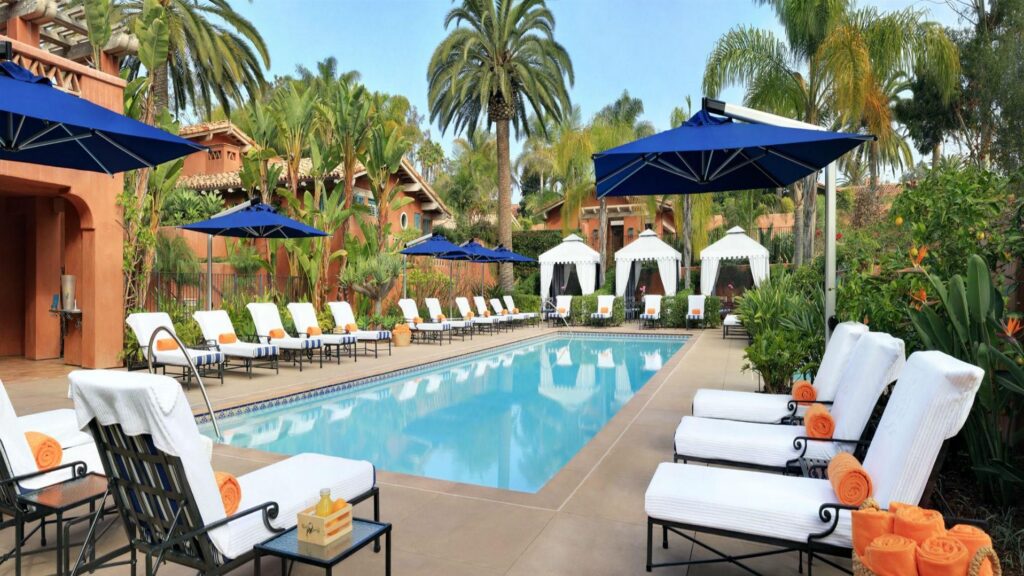

6. Rancho Valencia Resort & Spa, California, USA – Boutique Luxury near Pristine Beaches
Rancho Valencia Resort & Spa is one of the most impressive boutique hotels in the U.S., and while some consider it a hidden gem, it’s actually one of the most luxurious hotels in the world. The resort is only minutes away from the pristine Del Mar beaches and less than half an hour from San Diego. It features state of a gym, a Pilates studio, and some of the most beautiful tennis facilities, which have won numerous awards.
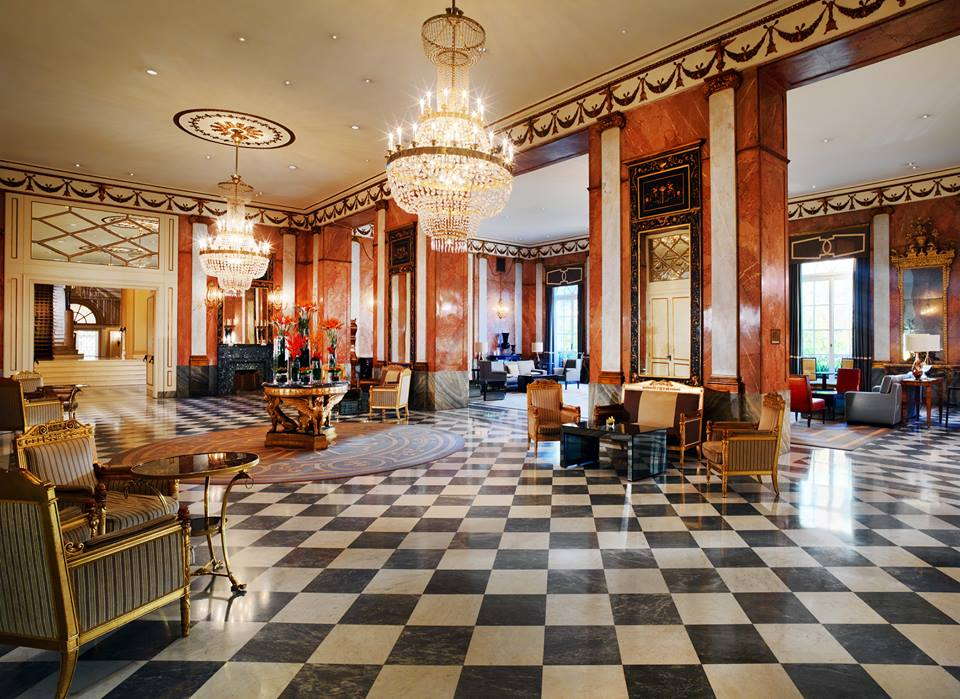

7. The Westin Excelsior, Rome, Italy – A Historic Retreat in the Eternal City
Constructed in 1906, the Westin Excelsior is one of the first lavish hotels ever built in Rome. The hotel’s architecture is one of the most stunning, and the amenities are definitely fantastic. The modern amenities include beautiful Jacuzzis, private fitness spots, an indoor swimming pool, stylish lounge bars, shops, and restaurants. The hotel’s most remarkable feature is its Villa La Cupola Suite, which recently underwent renovation for $7 million. This suite covers two full floors, making it the most spacious suite in the country. This suite has taken the Westin Excelsior to the next level. This hotel is one of the most luxurious hotels in the world.
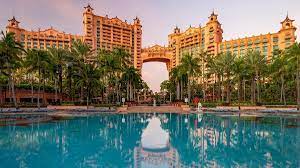

8. Atlantis Paradise Island, Bahama – A Tropical Oasis of Extravagance
Atlantis Paradise Island is the most famous resort destination in the Bahamas. It is home to an Aquaventure water park, 11 gorgeous pools, 1n 18-hole golf course, beautiful beaches, and a casino, which is the largest in the Caribbean. Covering a space of 141 acres, this massive project was developed to pay tribute to the ancient city of Atlantis. Its lavishness is part of what makes it so special and beloved, and it’s definitely one of the world’s most luxurious hotels.
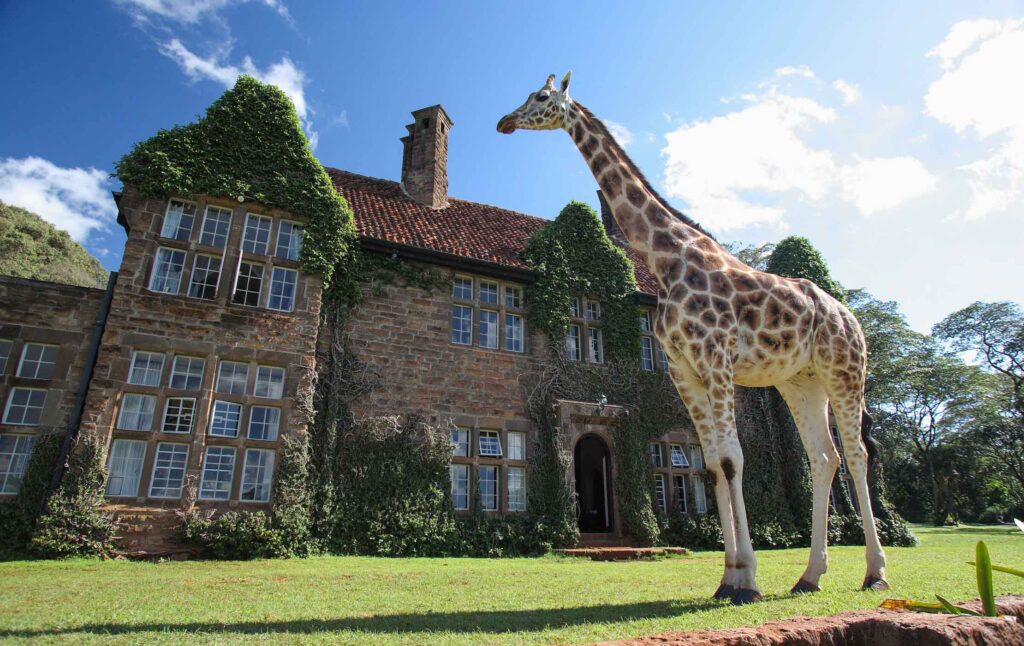

9. Giraffe Manor, Nairobi – An Enchanting Encounter with Wildlife
Famous for being one of the world’s most Instagrammed properties, Kenya’s Giraffe Manor allows guests to wake up to an unforgettable bucket-list breakfast with giraffes visiting, hoping to get something out of it. Located in Langata, Nairobi, this exclusive boutique hotel only covers a space of 12 acres but is one of the Capital’s most iconic buildings. Dating back to the 1930s, there is a lot to expect at the Boutique Giraffe Manor in Kenya can marvel at, including the stately façade, beautiful interior, lush gardens, gorgeous terraces, and stunning courtyards. A stay in the Giraffe is bound to be a memorable experience that every vacationer should enjoy at least once in a lifetime. It may be the smallest on this list, but it’s one of the world’s most luxurious hotels.
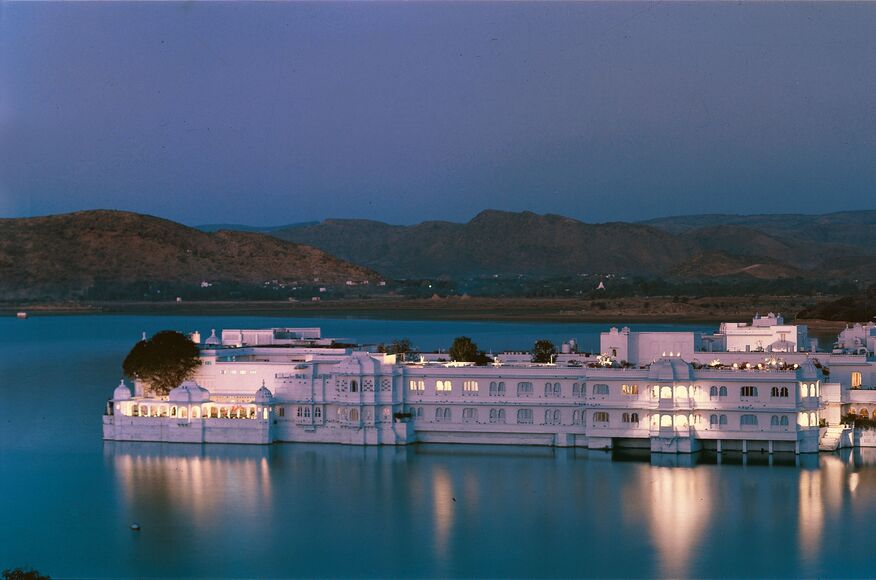

10. Taj Lake Palace, India – A Floating Gem on Lake Pichola
Initially referred to as Jag Niwas Palace, Taj Lake Palace was commissioned by Prince Maharana Jagat Singh and completed in 1746. It is the most famous floating hotel in India, boasting an incredible position on Lake Pichola in Udaipur. The hotel became world-famous after it appeared in the Hollywood James Bond movie, ‘Octopussy’ in 1983. Numerous Bollywood Hindi movies have also been filmed here. Its architecture is one of the most striking, and it comes as an incredible experience. Vacationers can enjoy cultural shows, get some pampering in a spa, explore the shopping arcade, and more.
Embark on a Journey of Luxury and Grandeur
In addition to the aforementioned luxurious hotels, the province of Palawan in the Philippines offers a haven of high-end resorts, accessible through the remarkable services of Horizon Sun Charters seaplane. Palawan’s pristine beaches, crystal-clear waters, and stunning natural landscapes provide the perfect backdrop for a luxurious escape. From the exclusive Banwa Private Island to the captivating Apulit Resort, Lagen Resort, Maniloc Resort, Pangulasian Resort, Noanoa Resort, El Rio Y Mar, Bacau Bay Resort, Lihim Resort, Busuanga Bay Resort, and Charlie’s El Nido Resort, the options are plentiful. These resorts cater to discerning travelers seeking an unmatched level of comfort, privacy, and personalized service. Fly with Horizon Sun Charters seaplane and immerse yourself in the enchanting beauty of Palawan while indulging in the utmost luxury and tranquility. Palawan’s high-end resorts offer a true paradise for those in search of a remarkable and unforgettable getaway. To combine flights, stay and discovery, try out our hassle-free package charters.
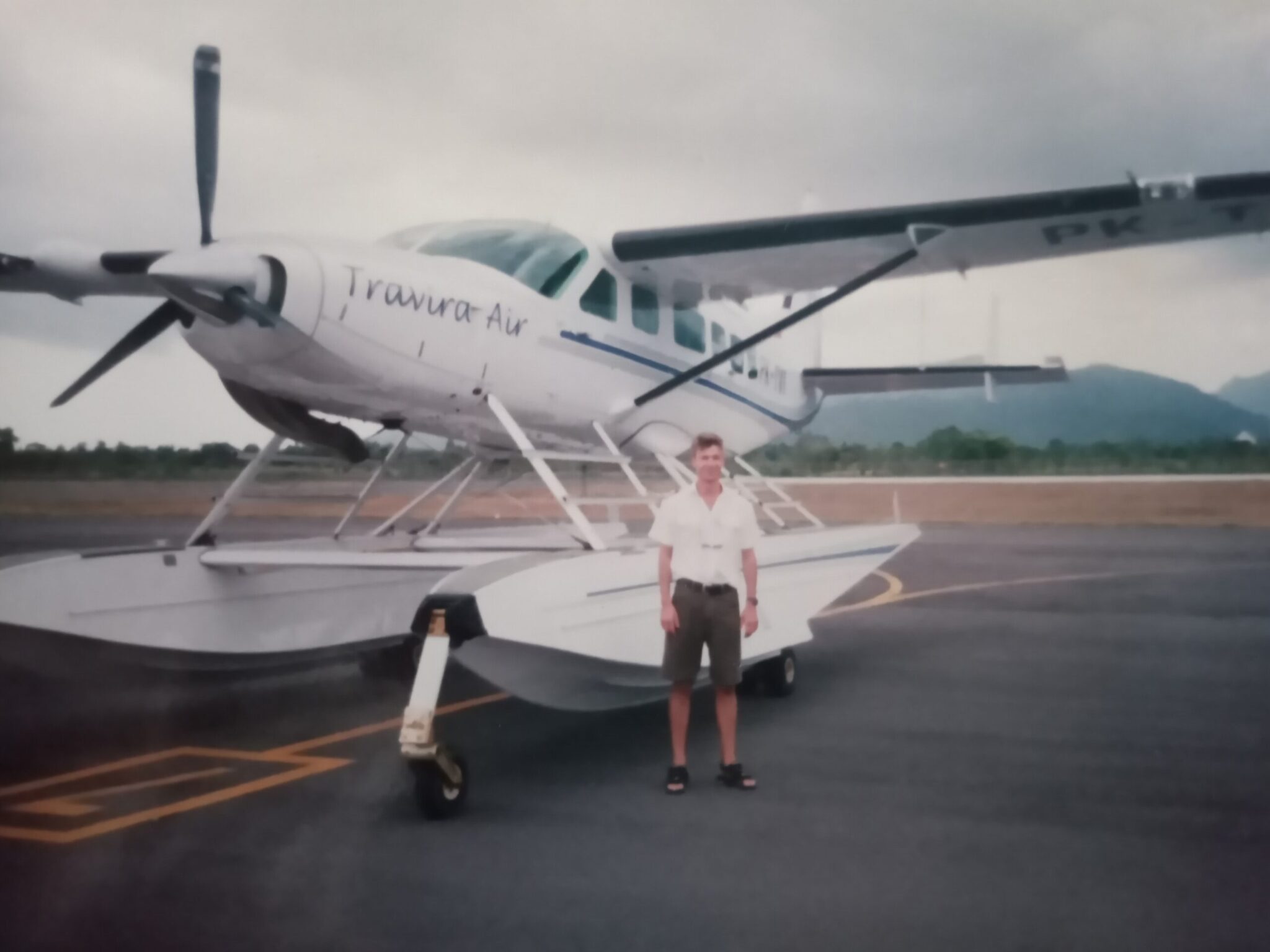

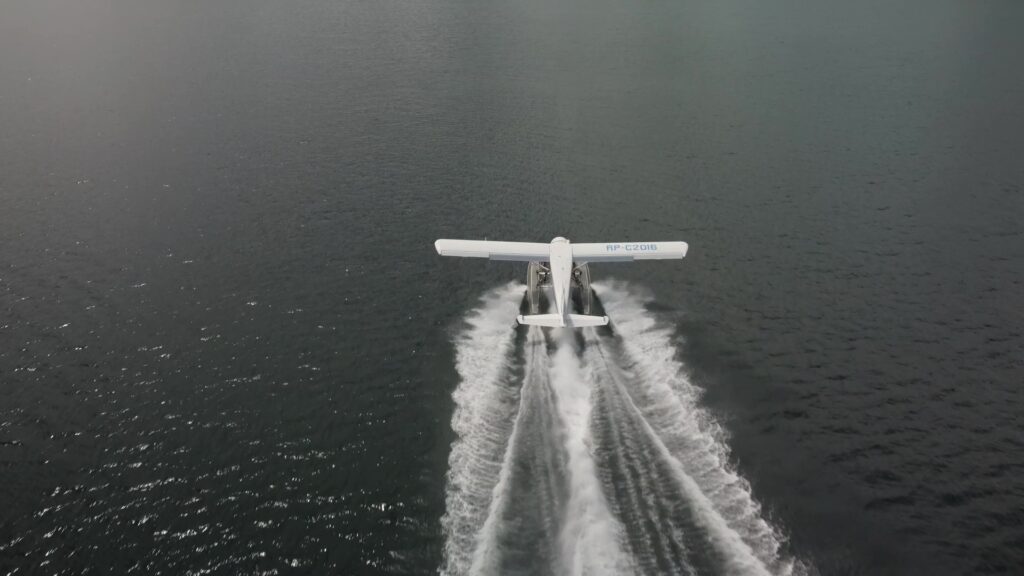

In some parts of the world, the words float plane and seaplane are interchangeable. However, the two have different meanings in technical terminology. A float plane and a seaplane can both take off and land on almost any body of water (oceans, lakes, rivers, etc.). However, a float plane has greater capabilities. Let’s look at the distinctions between the two.
Float plane vs. seaplane: What’s the difference?
Seaplane Characteristics
Any aircraft that can land, float, and take off on water with it’s fuselage is referred to as a seaplane. Flying boats are seaplanes with hulls that resemble those of a boat.
The majority of float-planes are modified land-planes. Two pontoons, or floats, usually support float planes on the water. Land plane wheels are frequently replaced by floats. Straight or amphibious floats are used on float planes. Straight float aircraft have no wheels and are unable to land. Amphibious aircrafts feature retractable wheels and can operate on both land and water.
The floats are what makes a plane a float plane Certain traits are shared by all seaplane. To aid takeoff, they are designed with a step—a break in the hull’s profile. The step aids takeoff by decreasing the amount of float in the water, lowering overall drag, and allowing the pilot to alter pitch attitude during the takeoff run. The deck refers to the top of the float. Behind the float are retractable water rudders that aid in steering in the water.
The design of the float bottom can have a considerable impact on the seaplane’s handling qualities. A shallow V bottom float, for example, would take off easily in calmer water but would be highly rough in other situations. While a deep V bottom float might be helpful in rough water, it would be difficult to get out of the water quickly in calm conditions.
Pros and Cons of a Seaplane
The fuselage, which works like a ship’s hull in the water because the fuselage’s underside has been hydrodynamically designed to allow water to flow around it, is the principal source of buoyancy in a flying boat. Small floats are put on the wings of most flying boats to keep them steady. Although not all small land plane were float planes, the majority of large seaplanes were flying boats with their hulls supporting their massive weight.
Some seaplanes can withstand rougher conditions than float planes. In waves or with a slight tailwind, a hull plane’s lower center of gravity makes it less prone to flip. Float planes, on the other hand, can take off faster from smooth water because the pilot can bank onto one pontoon and eliminate half of the water drag while gaining enough speed to fly.
You must depart from the entire hull’s large surface area when flying a seaplane, sometimes purposely pitching up and down to break free. If not done correctly, the plane can dangerously porpoise and crash.
Float plane Characteristics
A pontoon plane is another name for a float plane. A float plane has separate floats or pontoons that serve as a landing and takeoff surface instead of a fuselage/belly that can land directly on water. A float plane’s fuselage/belly is not supposed to touch the water. A float plane is a subcategory of seaplane which is why the two are interchangeable.
In contrast to a seaplane, where the hull serves the dual purpose of providing buoyancy in the water and space for the pilot, crew, and passengers, a float plane is a normal land plane with independent floats instead of wheels. The float kind of seaplane is the most prevalent, especially for those with low horsepower. It can have either single or twin floats However, most float planes have twin floats.
Pros and Cons of a Float plane
Because the fuselage is not in contact with water, float planes have a number of advantages, including the elimination of compromises for water tightness, general impact strength, and the hydroplaning characteristics required for the aircraft to leave the water. Attaching floats to a land plane also enables for significantly higher production numbers to cover the costs of developing and producing the tiny number of water-based aircraft.
Furthermore, with the exception of the largest seaplanes, float plane wings usually provide better clearance over obstructions such as docks, making loading easier while on the water. In comparison to aircraft fitted with wheeled landing gear, float planes have more drag and weight, making them slower and less maneuverable in flight, with a slower rate of ascent.
Which is better, a float plane or a seaplane?
The answer is contingent on the operator’s intention or intended usage for the aircraft. Many float planes are versatile and amphibious which can give them an edge over other seaplanes. These planes can take off and land on a runway as well as in the water.
There are many types of flat planes, and even more types of seaplanes, but talk about one formidable examples: The De Havilland Canada DHC-2 Beaver float plane, which is part of Horizon Sun Charters fleet. Our seaplanes is based in Puerto Princesa, Palawan.
The de Havilland Canada DHC-2 Beaver floatplane
Our DHC-2 Beavers can operate from water surfaces like oceans, lakes and rivers, with a minimum surface run of 300 meters (1,000 feet) in length. When flying under Visual Flight Rules (VFR), it can carry a weight of around half a tonne (1,000 lbs) across various islands in Palawan. This is why it is an ideal aircraft for an island nation like the Philippines, where land and sea transport can be a challenge.
- Capacity: 6 passengers + 1 pilot
- Wingspan: 48 feet
- Height: 10.4 feet
- Length: 32.9 feet
- Cruising speed: 180 km/h
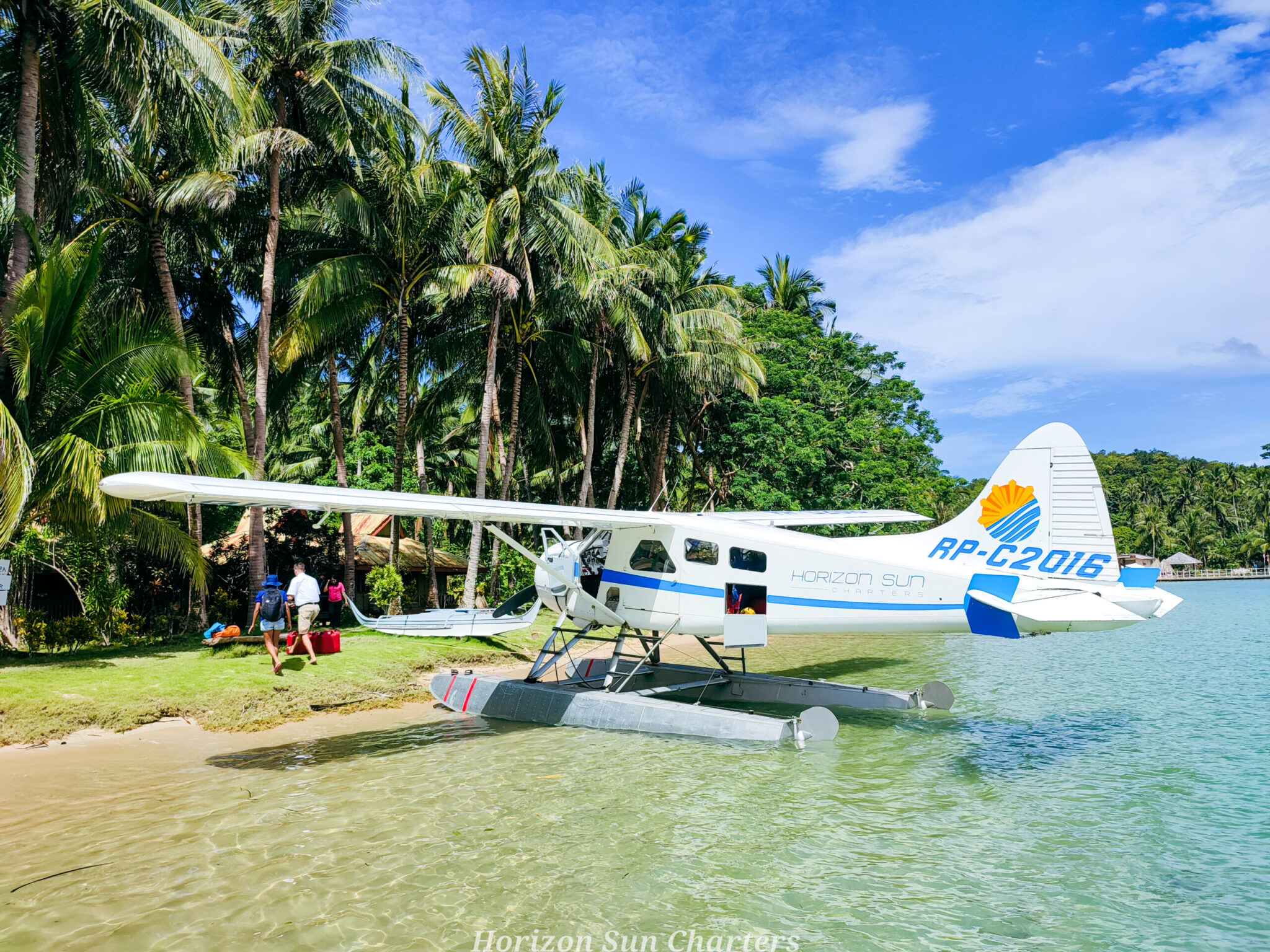

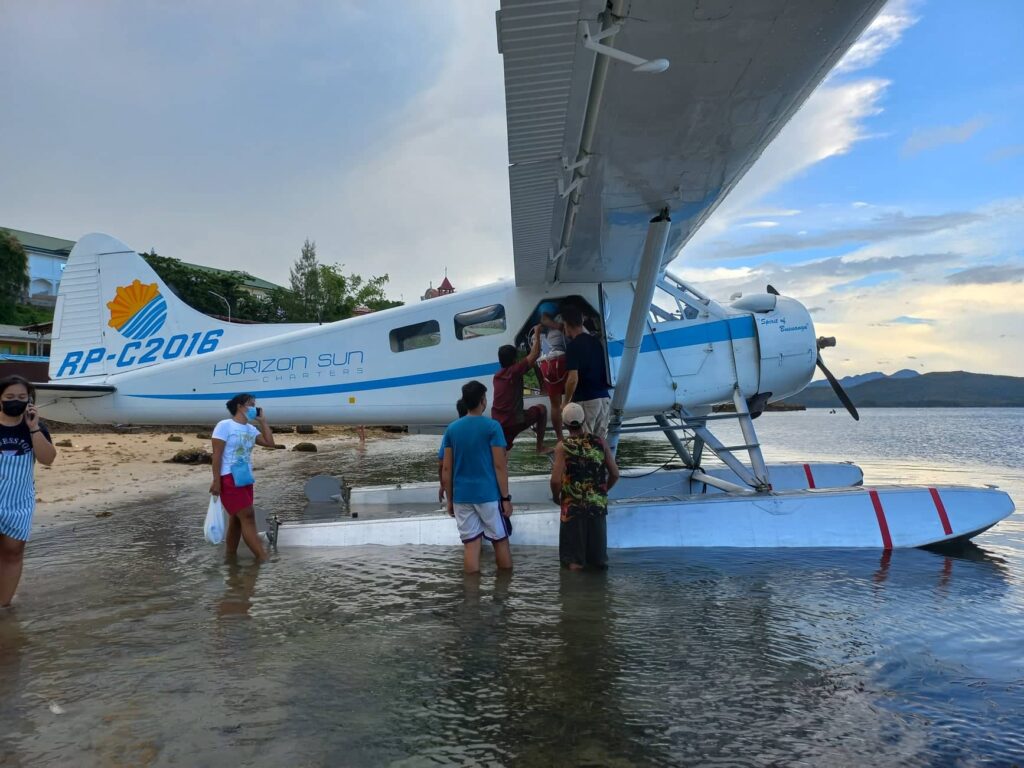

Since its inception to the world of air travel more than 100 years ago, the seaplane has seen its fair share of action. The flying boats of the past were useful assets to the military during World War I, and after the war seaplane pilots found commercial success by flying people and goods to places unreachable by other methods.
Nowadays, seaplanes are used by scientists, air-sea rescuers, and many other professionals making a living by diving into the wild. Those interested in experiencing what seaplane travel is like can have a taste of the real thing via Scenic Flights, with expert pilots flying them across spectacular vistas.
Are seaplane floats safe?
According to a study performed by the Transportation Safety Board of Canada (source), a very common contributing factor to seaplane accidents is the pilot’s level of skills, abilities, and knowledge. A seaplane and its floats are safe as long as the pilot is capable of properly handling the aircraft.
This study examined 1,432 seaplane accidents that happened between 1976 and 1990. Accidents were separated into four categories, depending on the phase of flight where they happened: During take-off, standing and taxiing, en route, or while approaching and landing.
Why do accidents on seaplanes happen?
More than half of accidents on seaplanes happen during take-off and landing phases (35% and 34% of accidents, respectively), with loss of control being cited as the overall main reason why accidents on seaplanes happen. The main contributing factors for a pilot to lose control of their aircraft are:
- Failing to obtain or maintain flying speed
- Selecting an unsuitable spot for take-off, landing, or taxiing
- Unfavorable winds
- Improper wind compensation
- Improper landing flare
- Flying in aircraft that has not been properly prepared or maintained
- Improper technique or not following standard procedures
- Attempting an operation beyond the pilot’s skill level
- Collision with an unperceived object or obstruction
- Loss of depth perception due to glassy water
Most of these factors relate to a pilot’s lack of judgement, experience or inadequate training. The study also made a distinction of pilots according to their flight experience, and as you can expect, experienced pilots fared incredibly better than their novice counterparts.
Flying a Seaplane
The very nature of seaplane travel demands a lot of energy and wit from whoever is piloting the aircraft. Land surface and take-off are not marked like runways are and seaplane travel is often the method of travel to remote places that are not easy to access by land, sea, or air and requires good judgment from the pilot.
The majority of accidents on seaplanes happen to pilots with less than 100 hours of flight time, meaning experience is a key factor in determining the chance of avoiding accidents. Many novice seaplane pilots may have not yet gotten accustomed to flying a vehicle with different properties from more conventional aircraft, and the basic training required to be eligible to fly a seaplane doesn’t necessarily prove their abilities to the full of their capacity.
One must be quick on their feet when dealing with abrupt changes in weather in remote locations. There is no control tower to radio in for help in the wilderness, and pilots must be able to rely on their good judgment to make it through tough conditions.
How many floats are under a seaplane?
Most types of seaplane possess two floats, but other possible layouts exist.
The Nakajima A6MN2-N, a Japanese World War II amphibious plane, is an example of a seaplane with only one float. Its lighter weight and very small frame allows it very good speed and handling in both air and rough waters, making it an effective plane to aid in defensive operations and to harass American patrol torpedo boats.
Despite making the aircraft heavier and harder to handle, most seaplanes possess two floats because of the benefit it brings to the overall stability of the plane. A two float design makes it easier to board and to moor the aircraft and corresponds with design principles commonly seen in most air vehicles.
The word seaplane is often used to refer to two distinct types of aircraft: the float plane and the flying boat. Even though both can land, take-off, and operate from water, the gist behind their designs is quite distinct.
Float plane
Float planes are based on conventional light aircraft, with floats fixed under the fuselage instead of wheels. The slender look of the float plane has been designed with buoyancy in mind. It is common for small aircraft to be repurposed into float planes by making modifications to add the floats and other necessary implements.
The floats are interchangeable with wheels in many float plane models. This allows the aircraft to take off and land from both land and water. Other models, like the amphibious variant, have retractable wheels attached to the floats.
Since their invention, float planes have been used to maneuver through landscapes too treacherous for other methods of transportation. In the past, the military forces of several countries took advantage of the amphibious nature of the seaplane plus its small frame. These qualities made it a suitable aircraft to mount a torpedo launcher on.
Flying Boat
The flying boats’ main difference from float planes is that their fuselage has been built with the purpose of staying afloat in mind. Floats and other winglike structures known as sponsors are placed on the sides of the flying boat to make sure it stays stable on the water.
The flying boat is much larger than the float plane, as it was one of the largest planes ever designed until World War II. During the war, British flying boats were documented as being efficient in hunting German U-boats and lethal to German float planes in dogfights.
Take a look at our seaplanes
How seaplane floats work
A seaplane operates like any other aircraft, with the perk of being able to take off, land, and float on water. Seaplane floats help a seaplane go sailing and taxiing through the water just like a boat, by steering with the help of a rudder connected to the rudder pedals inside the aircraft.
Balance is kept with the use of structures known as keel and skeg, which prevent the seaplane from tipping over the water. The keel will keep the ship steady from port to starboard, while the skeg does the same from bow to stern.
When pilots accelerate, the bottom of the float is lifted. This prevents friction from the water to slow the aircraft down. Seaplanes require a propeller that can produce more thrust during take-off than other similar-sized planes do, as lifting a float plane or flying boat takes more horsepower than what a land-based aircraft needs.
Buoyancy
What permits seaplane floats to work is a physics principle known as buoyancy, which basically states that an object must be less dense than water to float on it. The shape of all water vehicles must take buoyancy into account.Thanks to the marvels of engineering, even vessels made of heavy materials such as oak or steel can be buoyant.
Can a seaplane land on any body of water?
A seaplane can land on any body of water, as long as the pilot doesn’t put any people or property in danger when operating the aircraft. Seaplane pilots should stay on public bodies of water when landing, sailing, taxiing, and taking-off, to avoid trespassing on private property.
Seaplanes vs. Helicopters
A huge advantage of all types of seaplane over helicopters is the legroom. Seaplanes can carry larger loads and more passengers than what can fit in a helicopter. Even though helicopters may have more potential destinations in general, it is less common for seaplane flights to be canceled due to bad weather. Plus, seaplanes don’t require helipads or open terrain to land.
Remote locations
Sometimes research must be performed at locations that are very remote and hard to reach by other means of transportation. Seaplanes can land on any kind of body of water, making them ideal to reach areas cut from the world with lakes and rivers nearby. Professionals from several disciplines, from geologists to marine biologists, can explore those hard-to-reach nooks and crannies of the world by getting there on a seaplane.
Fighting Fire With Seaplanes
Skilled seaplane pilots can provide firefighting services to assist in putting down forest fires. Able to traverse through the harsh environment, they can quickly ferry firefighters and equipment where no other form of transportation can reach.
Come Fly With us
Horizon Sun Charters can take you to discover the most beautiful landscapes that Palawan has to offer. Fly over the remote white sandy beaches and lagoon of Taytay and the various islands and the crystal clear waters of Linapacan from above. Fly between the mountains and marvel at the scenery. Don’t lose the chance to see from your own eyes and discover the most breathtaking vistas on the wings of a seaplane.


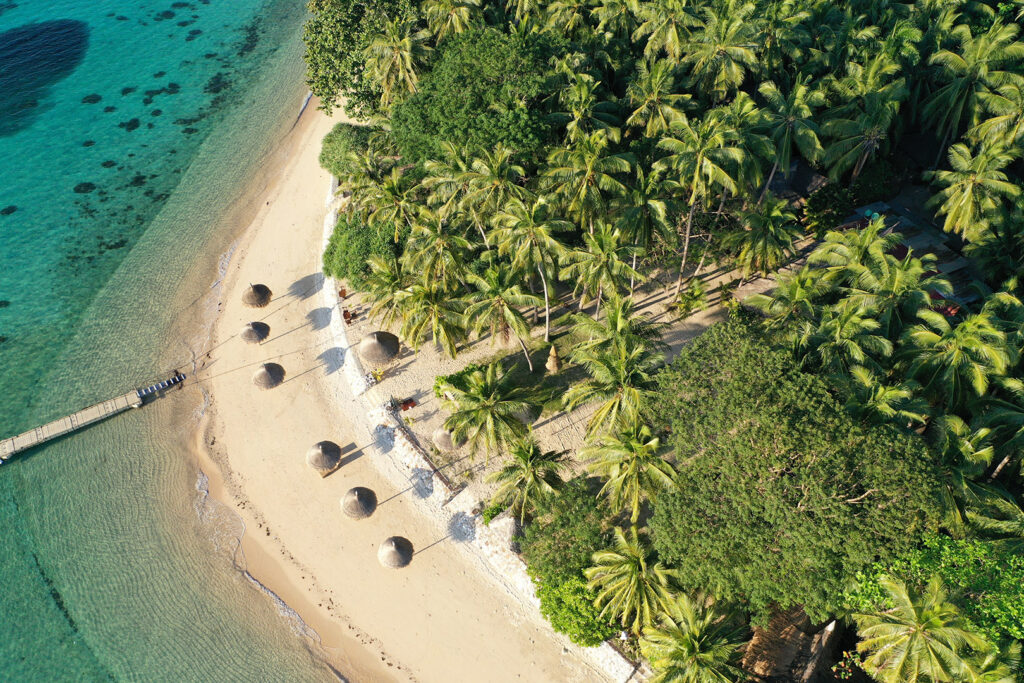

Flower Island in Shark Fin Bay, Taytay: Is a One-of-a-Kind Experience.
If you’re looking for a one-of-a-kind adventure, flying by seaplane to Flower Island in Shark Fin Bay, Taytay is what you are looking for.
In addition to the beautiful scenery, guests will also have the opportunity to visit the site of an incredible pearl farm. This amazing experience is described in more detail here below. Don’t miss this chance to see something truly unique and unforgettable.
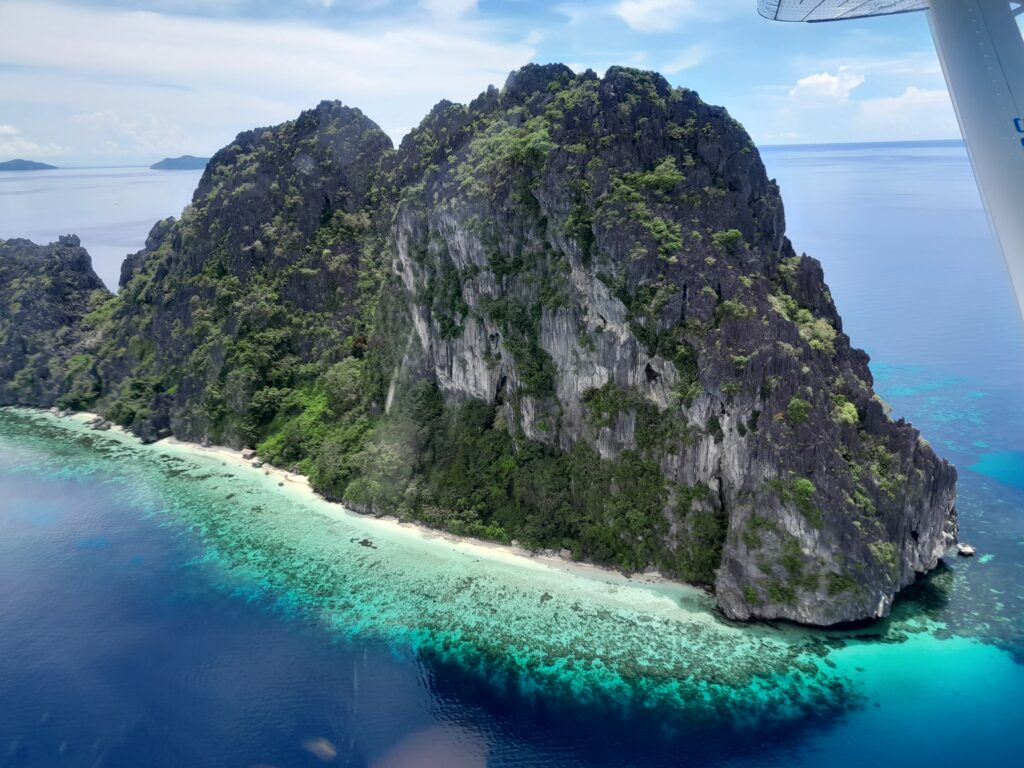

Discover the Fascinating World of Pearl Farming with Horizon Sun Charters: A Sustainable and Responsible Approach to High-Quality Pearls
Horizon Sun Charters is excited to share with you a unique insight into the world of pearl farming. Pearl farming is a complex and demanding process that requires patience, perseverance, and a deep understanding of the delicate marine ecosystem. The people who work in this industry are driven by a passion for creating beautiful and high-quality pearls, and they are committed to upholding the highest standards of environmental sustainability and social responsibility.
While the experience of visiting a pearl farm and seeing the end result of pearl cultivation is certainly awe-inspiring, it’s important to note the hardships and time involved in the process. Cultivating pearls is a delicate and time-consuming process that requires a great deal of expertise and patience.
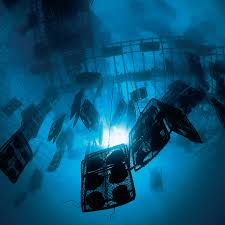

The Art of Pearl Cultivation: A Comprehensive Guide to Selecting and Nurturing Oysters for High-Quality Pearls
To start, pearl farmers must carefully select the oysters that will be used for pearl cultivation. These oysters are then placed in a controlled environment, where they are monitored and cared for over a period of several years. During this time, the oysters must be protected from predators, disease, and other environmental factors that could harm them.
Once the oysters have matured, the pearl cultivation process begins. This involves carefully inserting a small bead or piece of tissue into the oyster, which then triggers the oyster to begin coating the foreign object with layers of nacre, the material that makes up the pearl’s lustrous surface. Over time, the layers of nacre build up, forming a pearl that is unique in size, shape, and color.
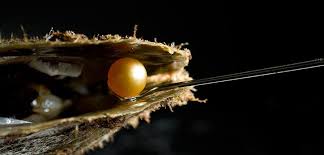

Discover the Legacy of Jewelmer: 40 Years of Excellence in Golden South Sea Pearls Production from Palawan, Philippines
Jewelmer is a world-renowned pearl producer that has been operating in Palawan, Philippines for over 40 years. Founded in 1979 by Jacques Branellec and Manuel Cojuangco, the company was one of the first to successfully cultivate golden South Sea pearls on a large scale.
Over the years, Jewelmer has built a reputation for excellence and innovation in the pearl industry. Their pearls are known for their superior quality, luster, and color, and are highly sought-after by collectors and connoisseurs around the world.
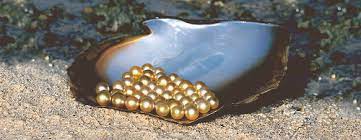

Jewelmer’s Commitment to Sustainability: Innovative and Socially Responsible Pearl Farming Practices in Palawan, Philippines
But the success of Jewelmer is not just due to the quality of their pearls. The company has also made a commitment to sustainability and environmental stewardship, working to ensure that their pearl farming practices are both ecologically responsible and socially sustainable.
Jewelmer has developed a unique and innovative approach to pearl farming that emphasizes the importance of preserving the delicate ecosystem of Palawan. They work closely with local communities to promote sustainable fishing practices and protect the marine environment, and they have implemented a number of programs to support education, health, and other social initiatives in the region.


Jewelmer: A Model for Sustainable Golden South Sea Pearl Production and Social Responsibility in Palawan, Philippines
Today, Jewelmer is widely regarded as one of the world’s leading producers of golden South Sea pearls, and their commitment to sustainability and social responsibility has earned them a reputation as a model for other companies in the industry. Their story is one of innovation, dedication, and a deep appreciation for the natural beauty of Palawan’s marine environment.
To Discover the Secret of the Golden South Pearl, Fly with us by Seaplane to Flower Island in Shark Fin Bay: A Once-in-a-Lifetime Adventure of Unforgettable Beauty – Book Now!
Flower Island Resort – The Presidential Villa Packages
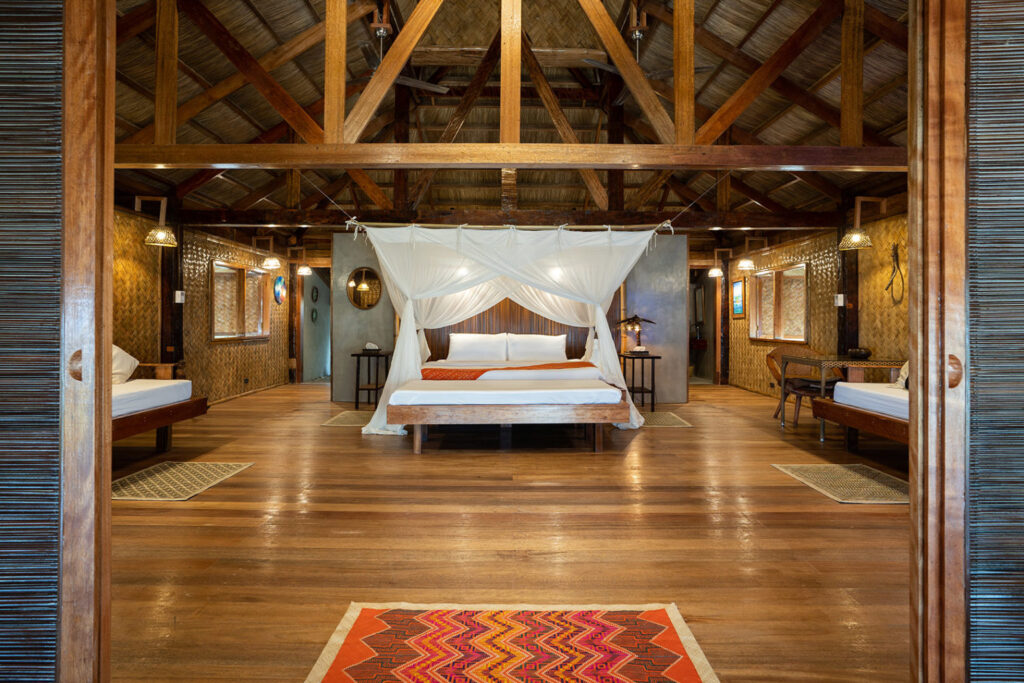

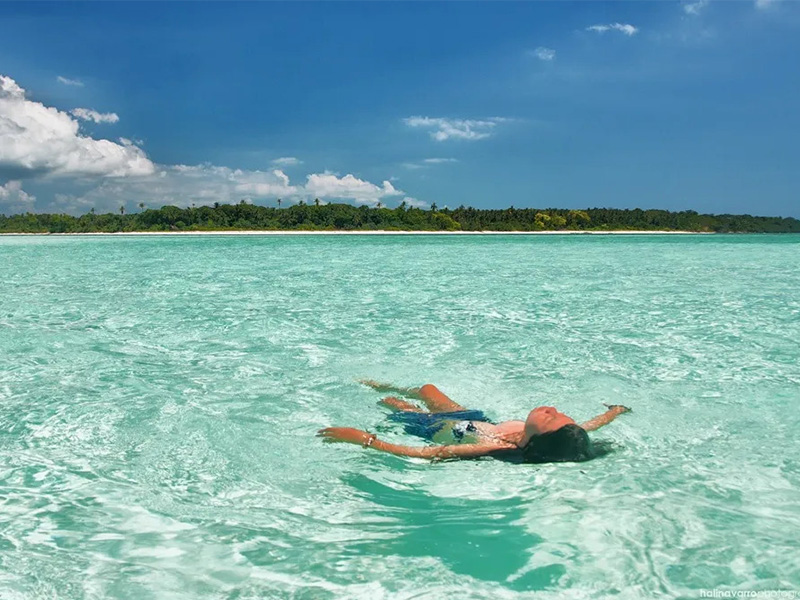

Horizon Sun Charters’ seaplane is a luxurious and convenient way to explore the beautiful islands and coastal areas of the Philippines, especially in areas where land-based transportation is limited. With destinations including Palawan, Balabac, El Nido, Coron, Busuanga, Linapacan, Port Barton/San Vicente, Cullion and Taytay, seaplane charters offer an unparalleled opportunity to experience the island’s stunning natural beauty from above.


Discover the Best of the Philippines with Customized Tours from Horizon Sun Charters
Horizon Sun Charters provides customized services to meet the specific needs of their clients, from transportation between islands to sightseeing tours. Visitors can choose from a range of specialized packages, such as island hopping, diving, and snorkeling. Making it easy to explore the country’s coral reefs and marine life.
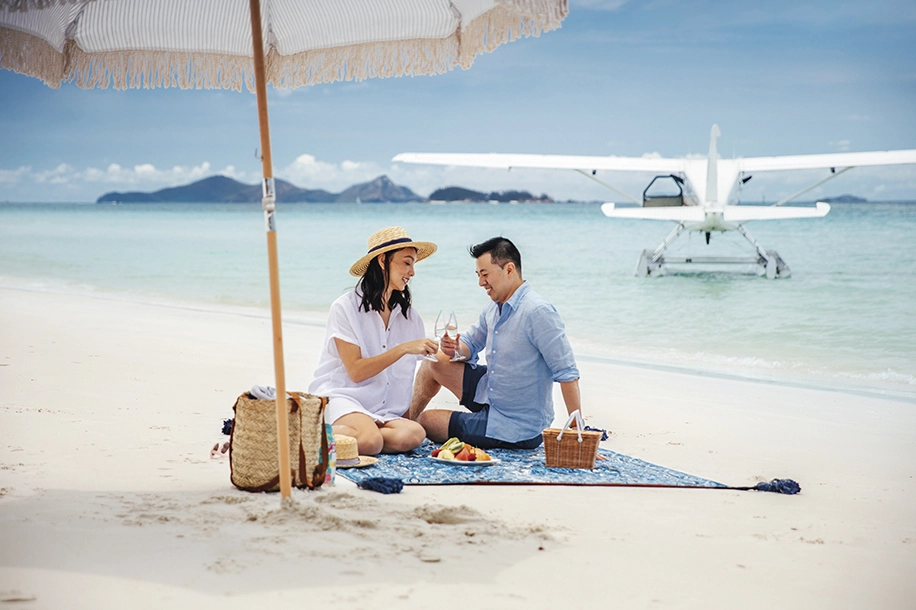

Horizon Sun Charters: Your Gateway to Luxury Seaplane Travel and Exploration
Whether traveling for business or pleasure, Horizon Sun Charters offers an exciting and unforgettable travel experience. Seaplanes provides an unparalleled way to travel in luxury, while taking in some of the most breathtaking views the country has to offer.
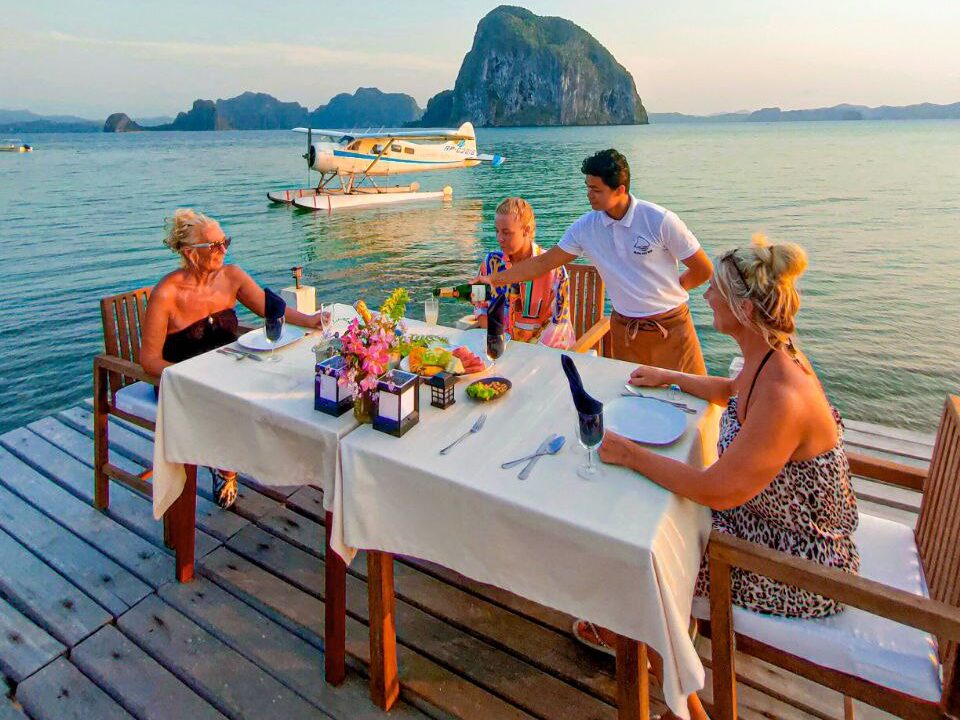

Discover Palawan’s Gems: Popular Destinations to Explore with Horizon Sun Charters
Some of the most popular destinations for Horizon Sun Charters in the Philippines include Palawan’s El Nido and Coron, where visitors can explore the stunning lagoons and limestone cliffs. Other destinations include the remote island of Balabac, which boasts pristine beaches and crystal-clear waters, and the Busuanga Island in the Calamian Islands, which is known for its world-class wreck diving sites.
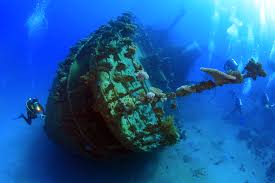

Discover the Philippines in Style with Horizon Sun Charters Seaplane
By choosing Horizon Sun Charters seaplane, visitors to the Philippines will enjoy a unique and exciting way to explore the country’s many beautiful islands and coastal areas, all while traveling in comfort and luxury.

